Create a Clock App Icon
In the following tutorial, you will learn how to create a clock app icon in Picta Graphic for Mac.
For starters, you will learn how to set up a simple grid and how to create a simple background. Taking full advantange of the Effects pane, you will learn how to add shading and subtle highlights for the main shape.
Using some thin text along with some basic vector shape building techniques, you will learn how to create a simplified grid and a tiny bell icon. Finally, you will learn how to create the clock hands and how to easily adjust them using the Rotate Tool.
Step 1
For this tutorial we'll create a new 680 x 680 pixel document. Go to File > New (Command + N) to bring up the New Document panel. Select the Grid document style and set the document units to pixels. Set the document dimensions to 680 pixels wide by 680 pixels high and then click Choose to create your document.
Next, we'll adjust the document grid. Switch to the Grid pane in the Properties panel. You can easily open or close the Properties panel using that ruler icon. Change the X & Y Spacing to 1, set the Subdivisions to 0 and don't forget to enable Snap to Grid—all these features will make your work easier.

Step 2
Focus on the Toolbar, click the stroke color well and drag the Alpha slider to 0%, which will make the stroke invisible.
Pick the Rectangle Tool (M), focus on your canvas and create a 680 px square. Holding the Shift key will make it a lot easier for you to create a perfect square.
Make sure that your square covers the entire canvas, keep it selected and go to the Effects pane from the Appearance panel—click the leftmost inspector panel icon to open the Appearance panel whenever you want.Click the existing fill and replace the color with a linear gradient. Set the Angle to 135 degrees and then move to the gradient color stops. Click the left one and set its color to R=195 G=192 B=233, and then click the right one and set its color to R=241 G=240 B=255.
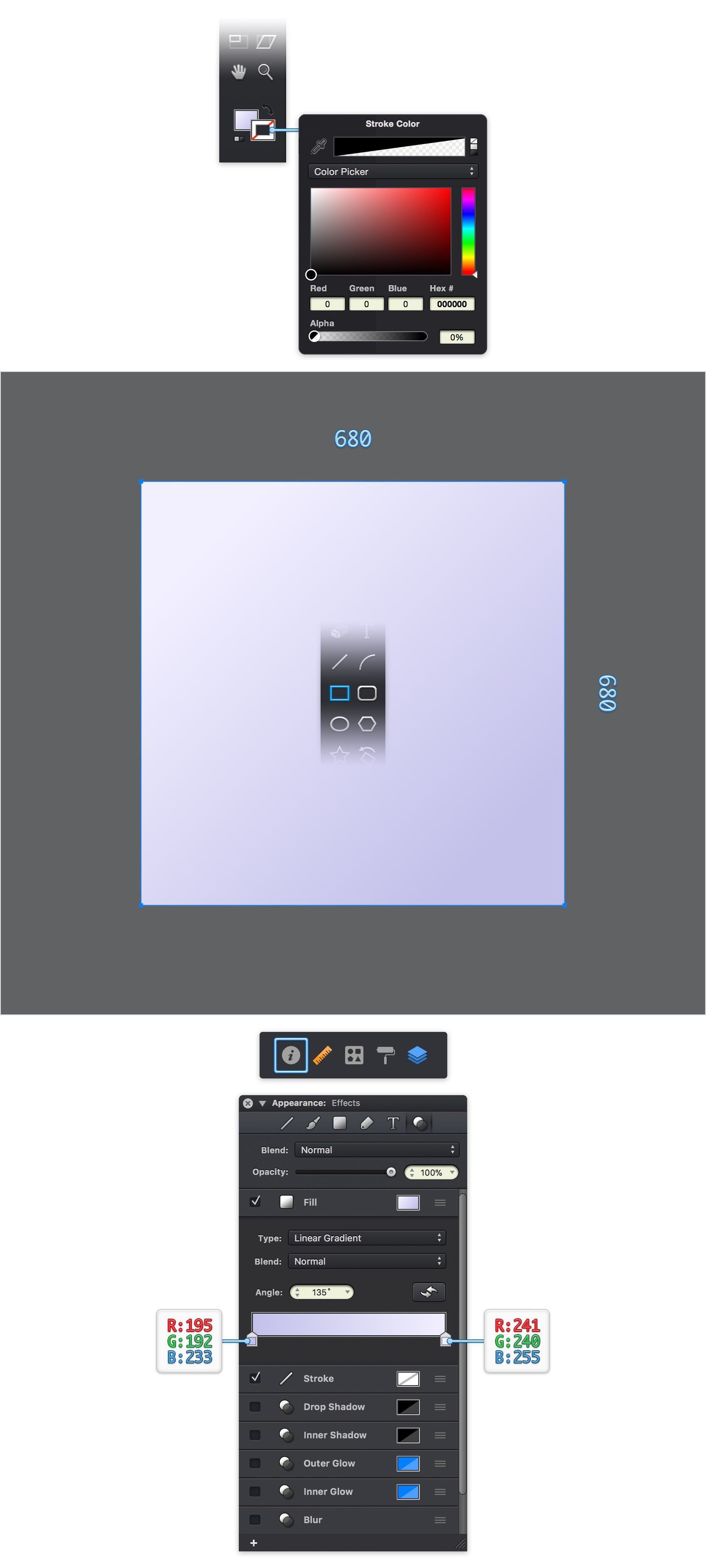
Step 3
Focus on the Layers panel for a moment. Double-click the name of the existing layer and rename it "Bg". Using the plus button from the bottom, left corner of the panel, add a second layer. Rename it "Frame" and make sure that it stays selected, as the new objects you are about to create will go here.
Pick the Rounded Rectangle Tool (Shift + M) and set the Corner Radius to 55 pt. Create a 256 x 256 px shape and fill it with the linear gradient shown below.
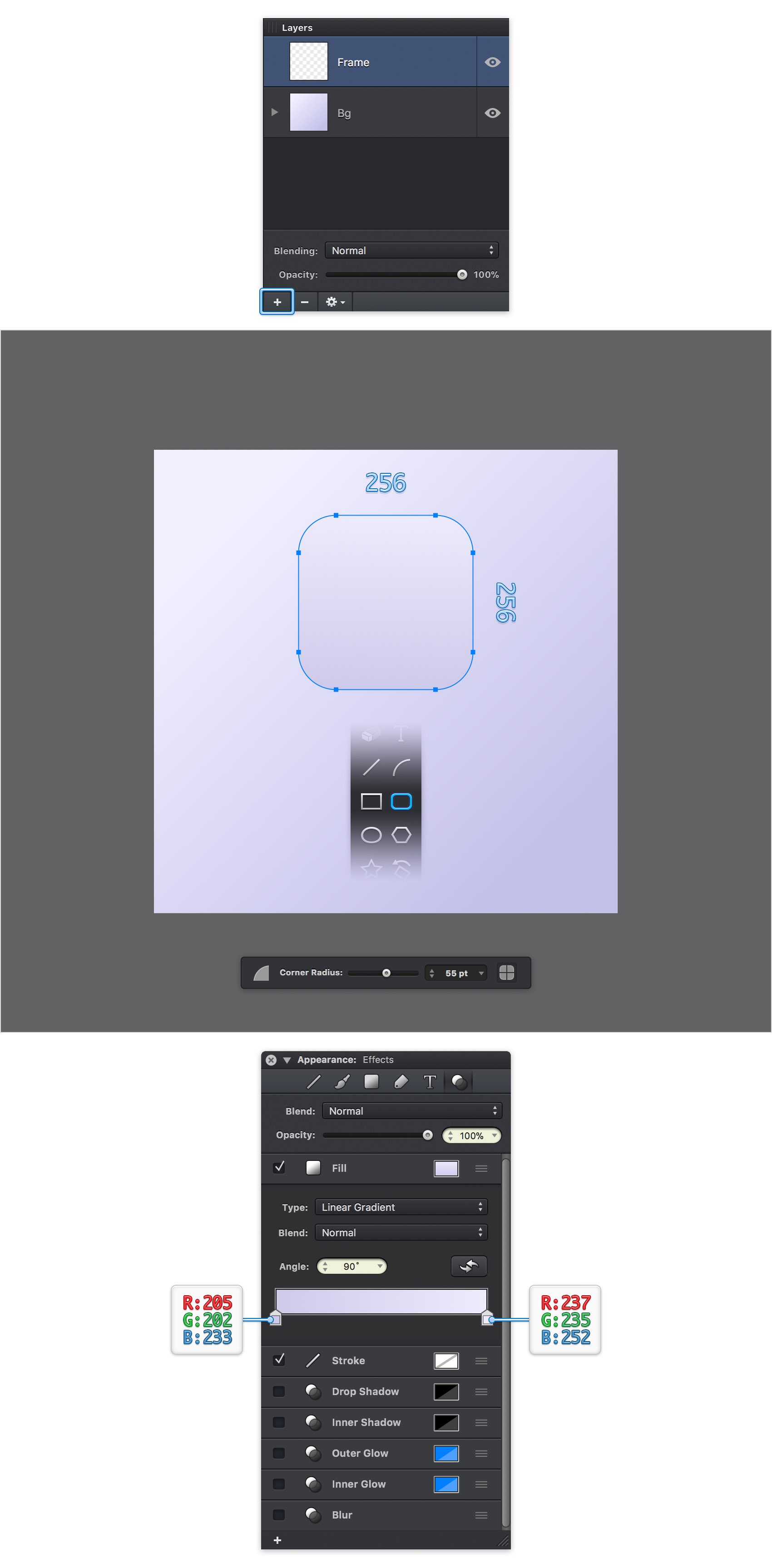
Step 4
Make sure that your rounded rectangle is still selected and open the Alignment pane from the Properties panel. Click the Horizontal Centers and the Vertical Centers commands to easily bring your selection in the center of the canvas.
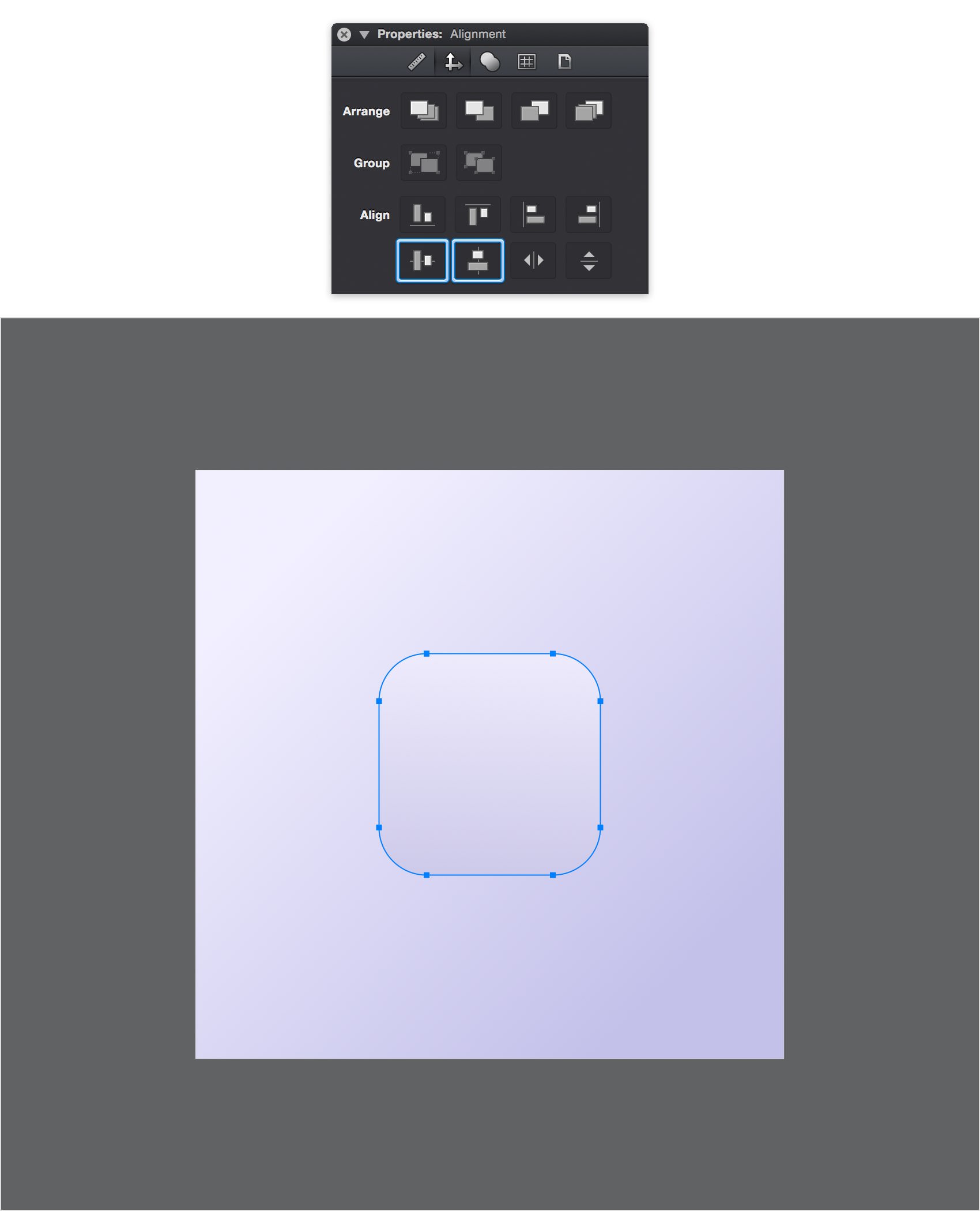
Step 5
Make sure that your rounded rectangle stays selected, focus on the Effects pane and activate the existing Drop Shadow effect.
Drag the Size slider to 0 and then click the color well that stands for this effect. Set the color to R=53 G=52 B=92 and drag the Alpha slider to 5%.
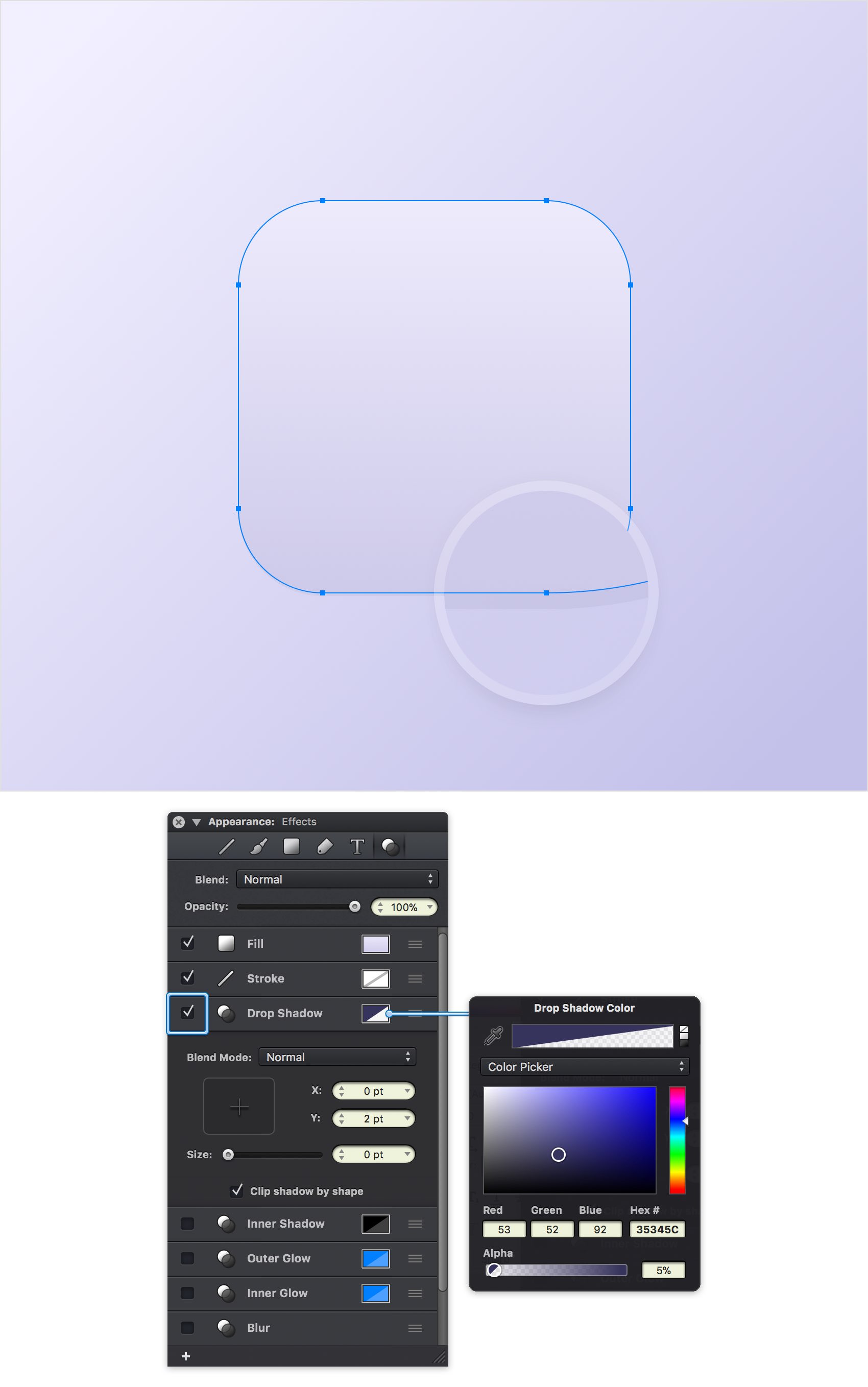
Step 6
Make sure that your rounded rectangle is still selected and keep focusing on the Effects pane.
Add a second Drop Shadow effect using that plus button and select it. Drag the Size slider to 0, enter 4 pt in the Y box, and then click the color well that stands for this new effect. Set the color to R=54 G=52 B=93 and drag the Alpha slider to 4%.

Step 7
Make sure that your rounded rectangle is still selected and keep focusing on the Effects pane.
Add a third Drop Shadow effect and select it. Drag the Size slider to 0, enter 6 pt in the Y box, and then click the color well that stands for this new effect. Set the color to R=54 G=52 B=93 and drag the Alpha slider to 3%.

Step 8
Make sure that your rounded rectangle is still selected and keep focusing on the Effects pane.
Add a fourth Drop Shadow effect and select it. Drag the Size slider to 0, enter 10 pt in the Y box, and then click the color well that stands for this new effect. Set the color to R=54 G=52 B=93 and drag the Alpha slider to 2%.
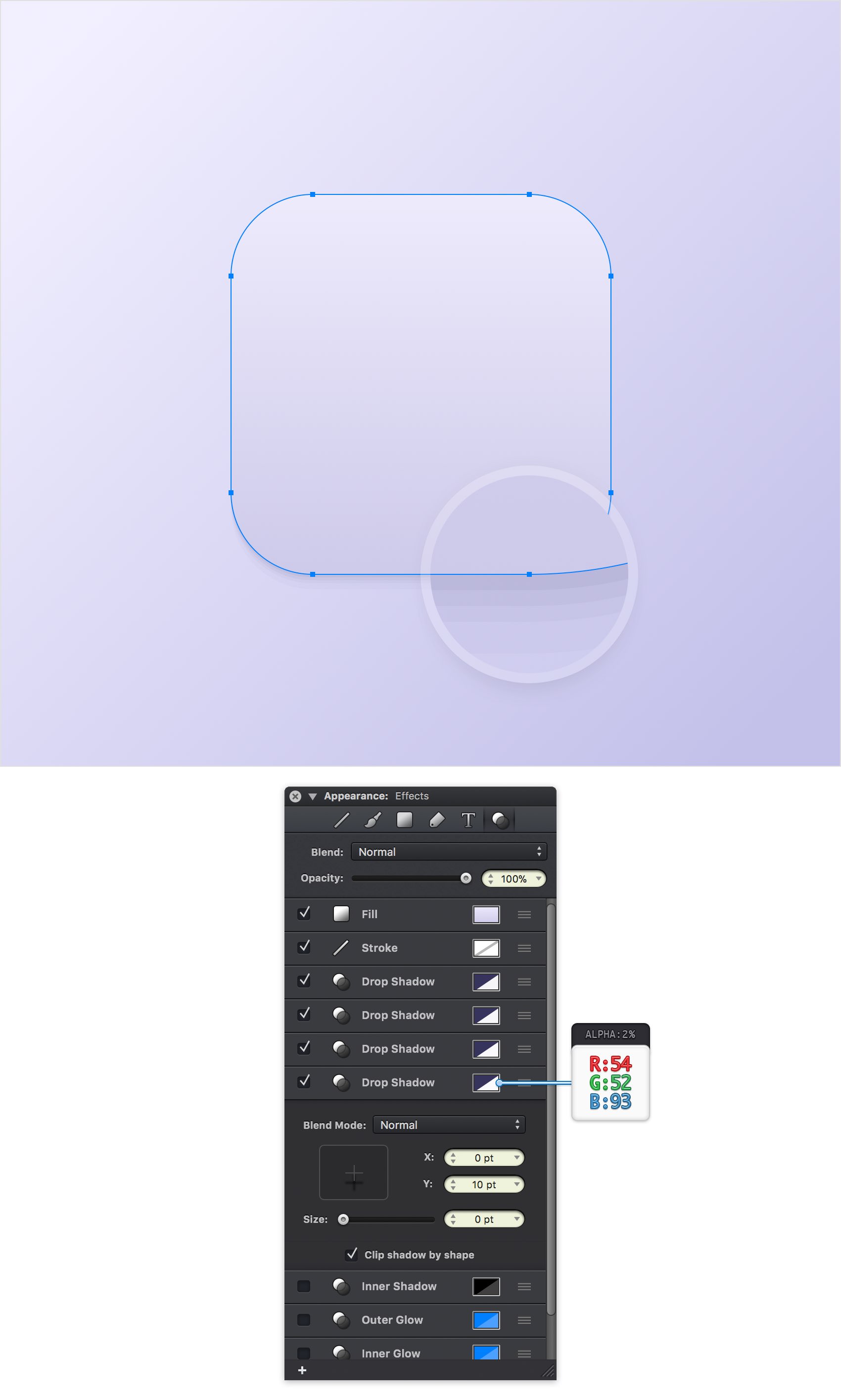
Step 9
Make sure that your rounded rectangle is still selected and keep focusing on the Effects pane.
Add a fifth Drop Shadow effect and select it. Drag the Size slider to 20 pt, enter 10 pt in the Y box, and then click the color well that stands for this new effect. Set the color to R=54 G=52 B=93 and drag the Alpha slider to 15%.
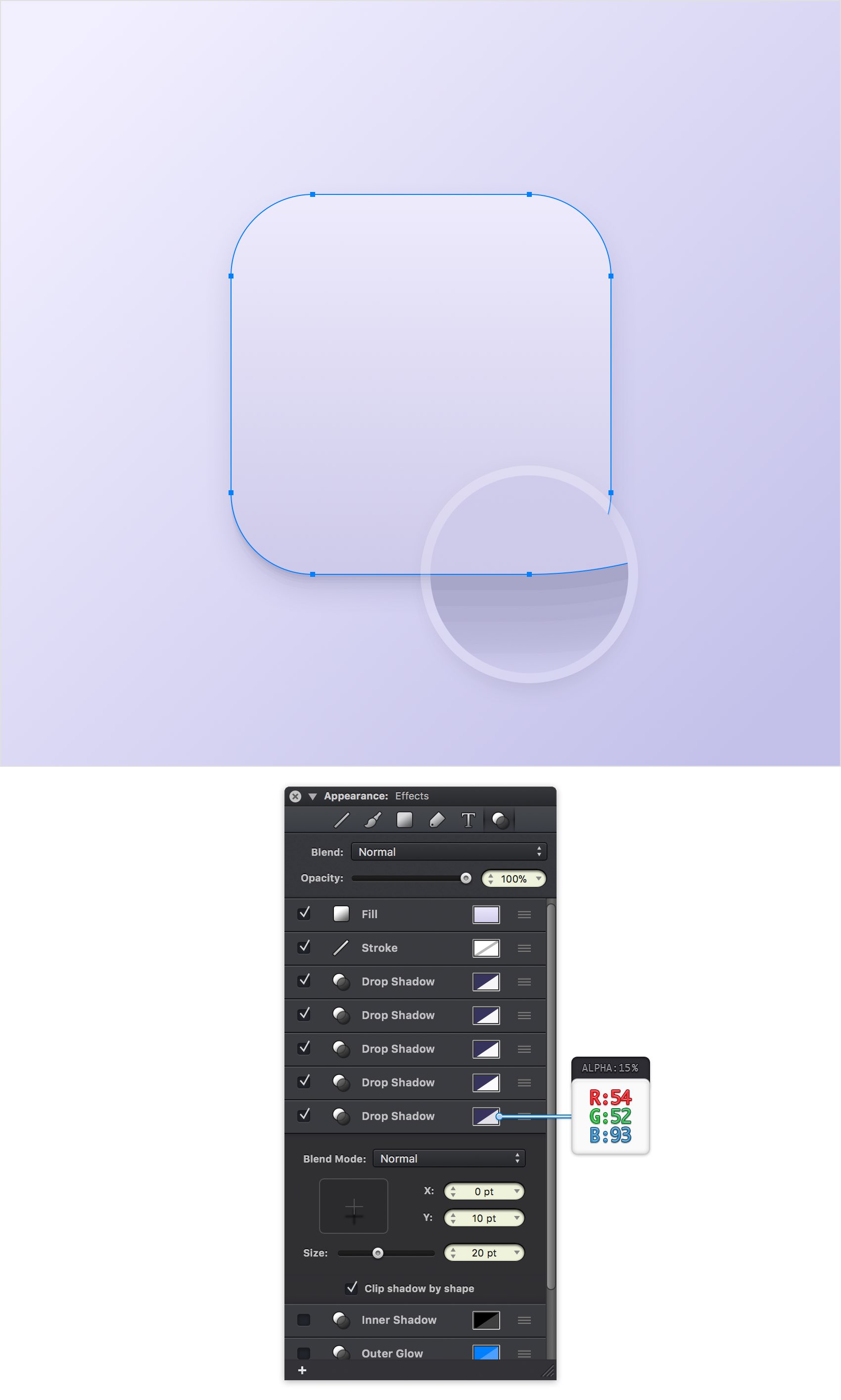
Step 10
Make sure that your rounded rectangle is still selected and keep focusing on the Effects pane.
Activate the existing Inner Shadow effect and select it. Drag the Size slider to 10 pt, enter -10 pt in the Y box, and then click the color well that stands for this effect. Set the color to R=165 G=165 B=210 and be sure that the Alpha slider is set to 100%.
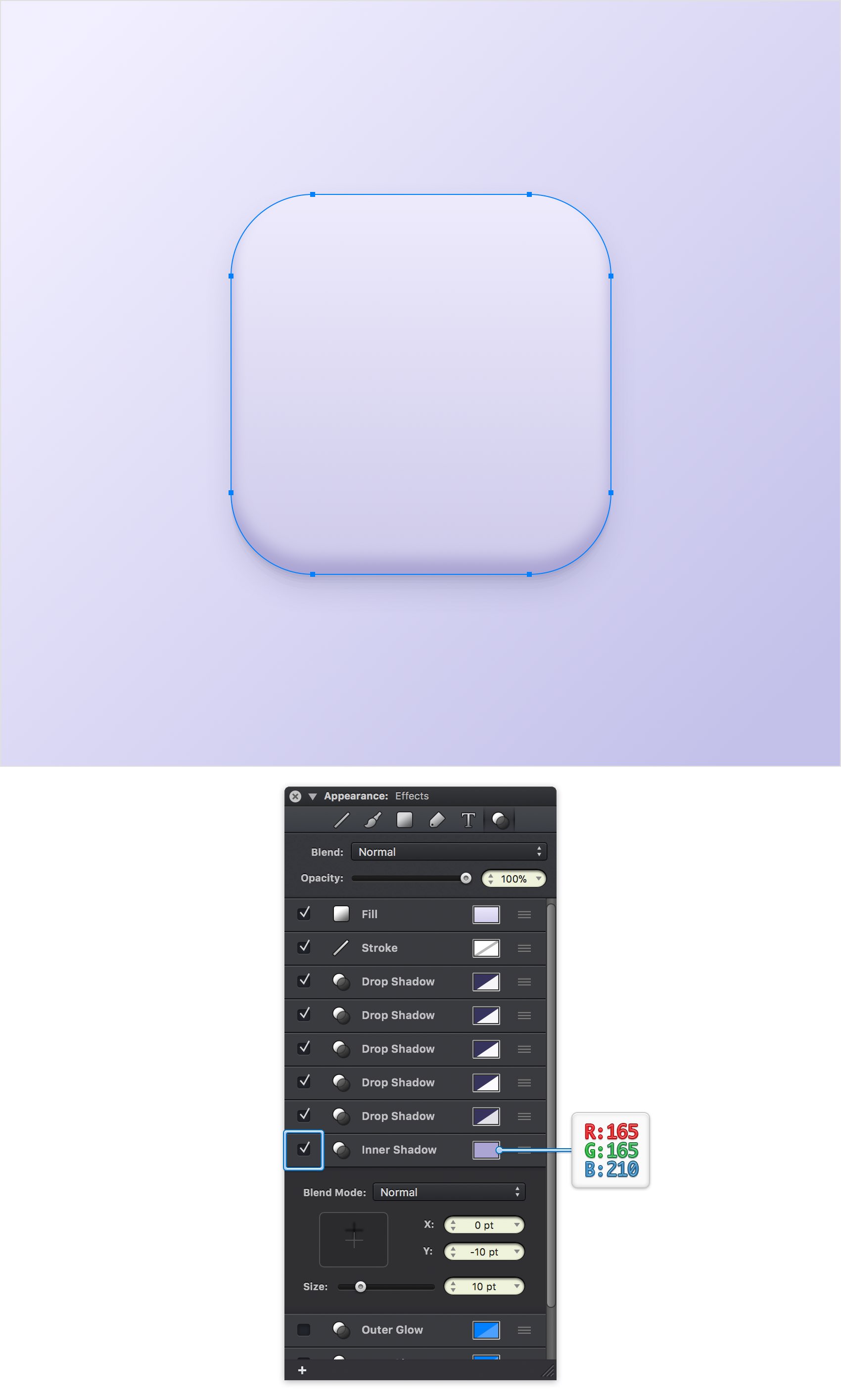
Step 11
Make sure that your rounded rectangle is still selected and keep focusing on the Effects pane.
Using that same plus button, add a second Inner Shadow effect and select it. Keep the Size slider to 5 pt, enter -5 pt in the Y box, and then click the color well that stands for this new effect. Set the color to R=216 G=212 B=240 and drag the Alpha slider to 70%.
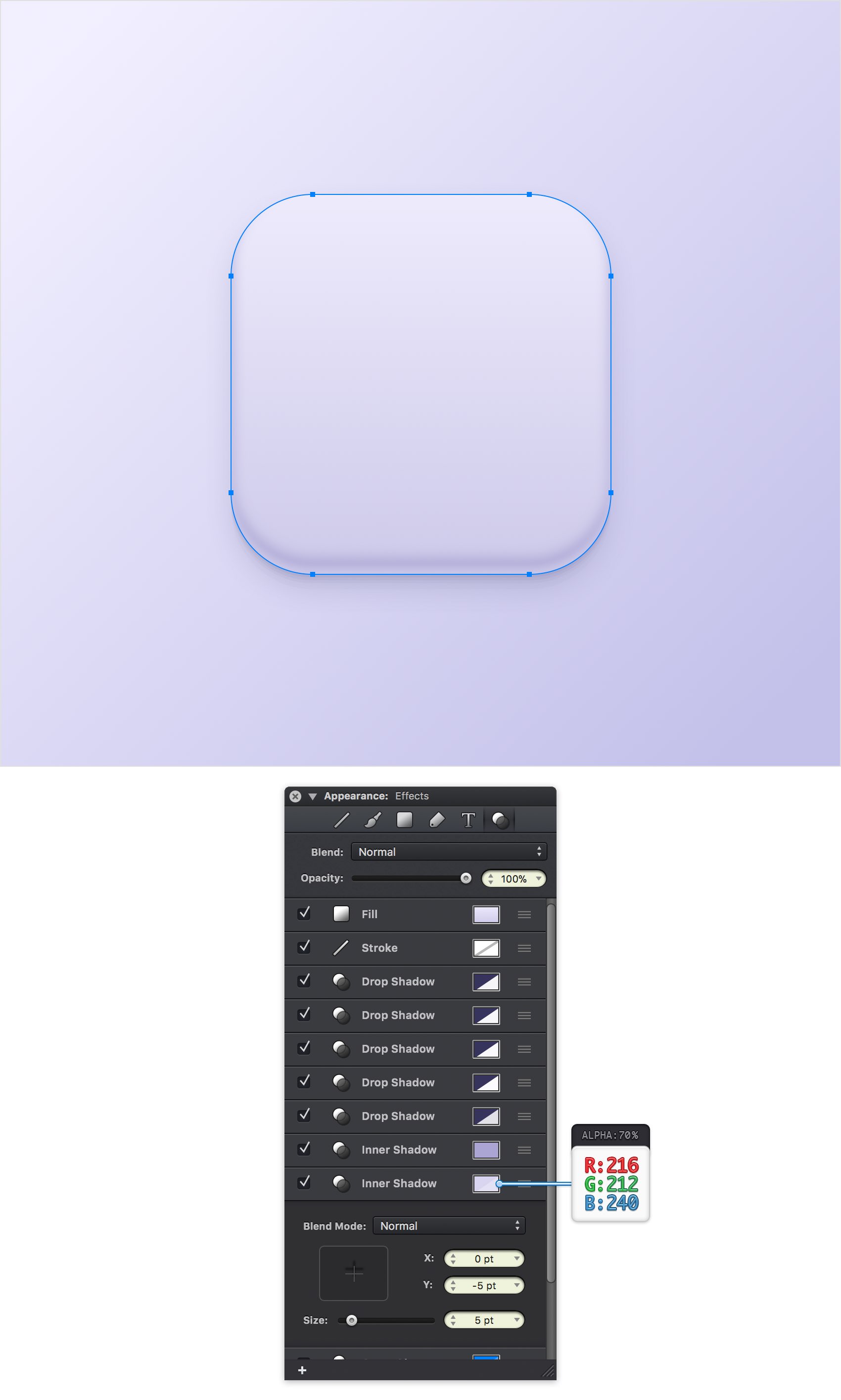
Step 12
Make sure that your rounded rectangle is still selected and keep focusing on the Effects pane.
Activate the existing Inner Glow effect. Drag it right above those Inner Shadow effects and select it. Change the Blend Mode to Overlay and drag the Size slider to 15 pt, and then click the color well that stands for this effect. Set the color to white and drag the Alpha slider to 50%.

Step 13
Pick the Ellipse Tool (O) and create a 166 px circle. Fill it with yellow and center it using the same Horizontal Centers and the Vertical Centers commands from the Alignment pane.
Using the same tool, create a 136 px circle. Fill it with black and center it.
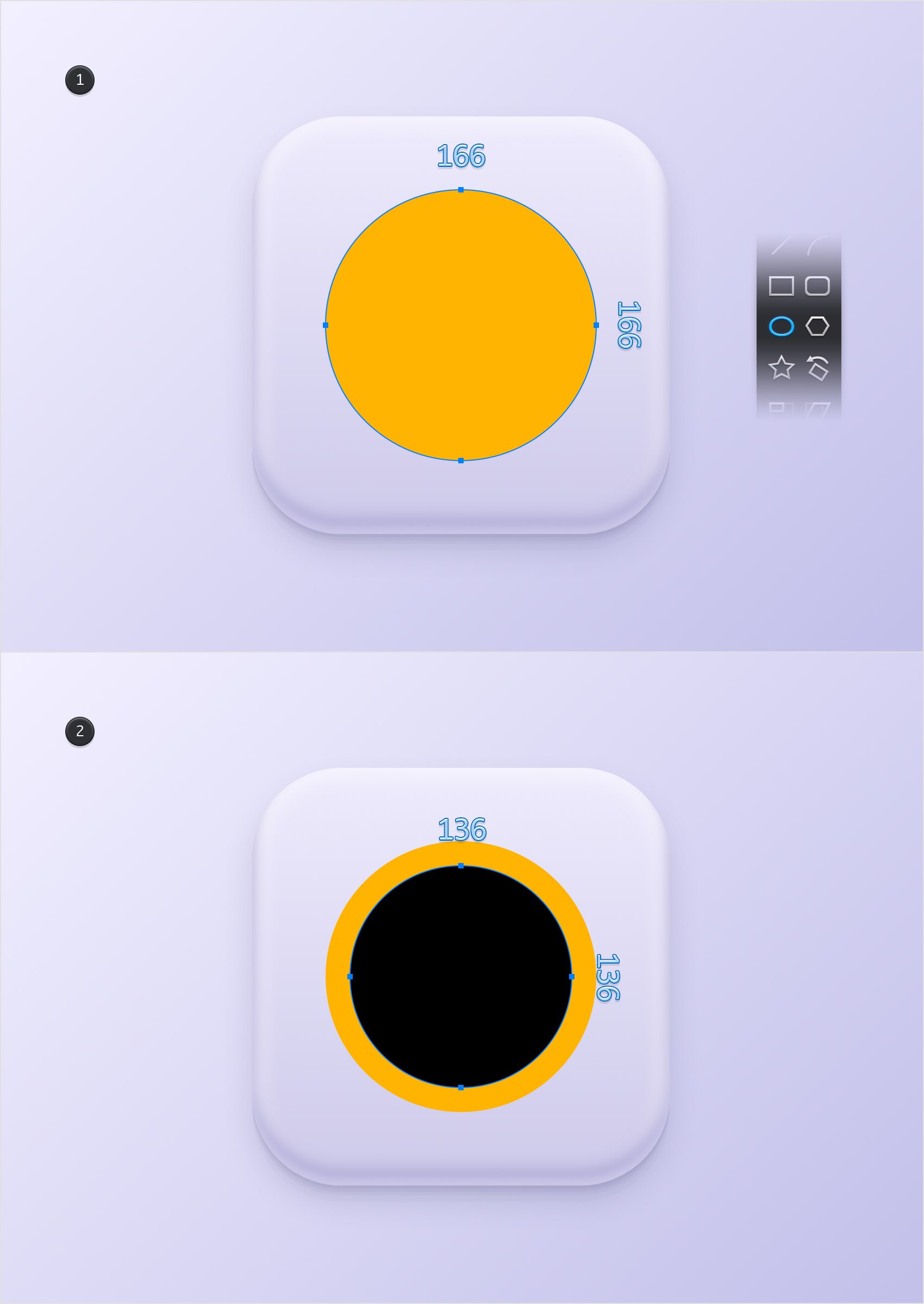
Step 14
Select your two circles, go to the Path Tools pane from the Properties panel and click the Subtract command. Fill the resulting shape with the linear gradient shown below.

Step 15
Make sure that your circle is still selected, focus on the Effects pane and select the existing Stroke. Make sure that the Width is set to 1 pt, change the Position to Inside and the Blend to Soft Light, and then click the color well that stands for this Stroke. Be sure that the color is set to black and drag the Alpha slider to 20%.
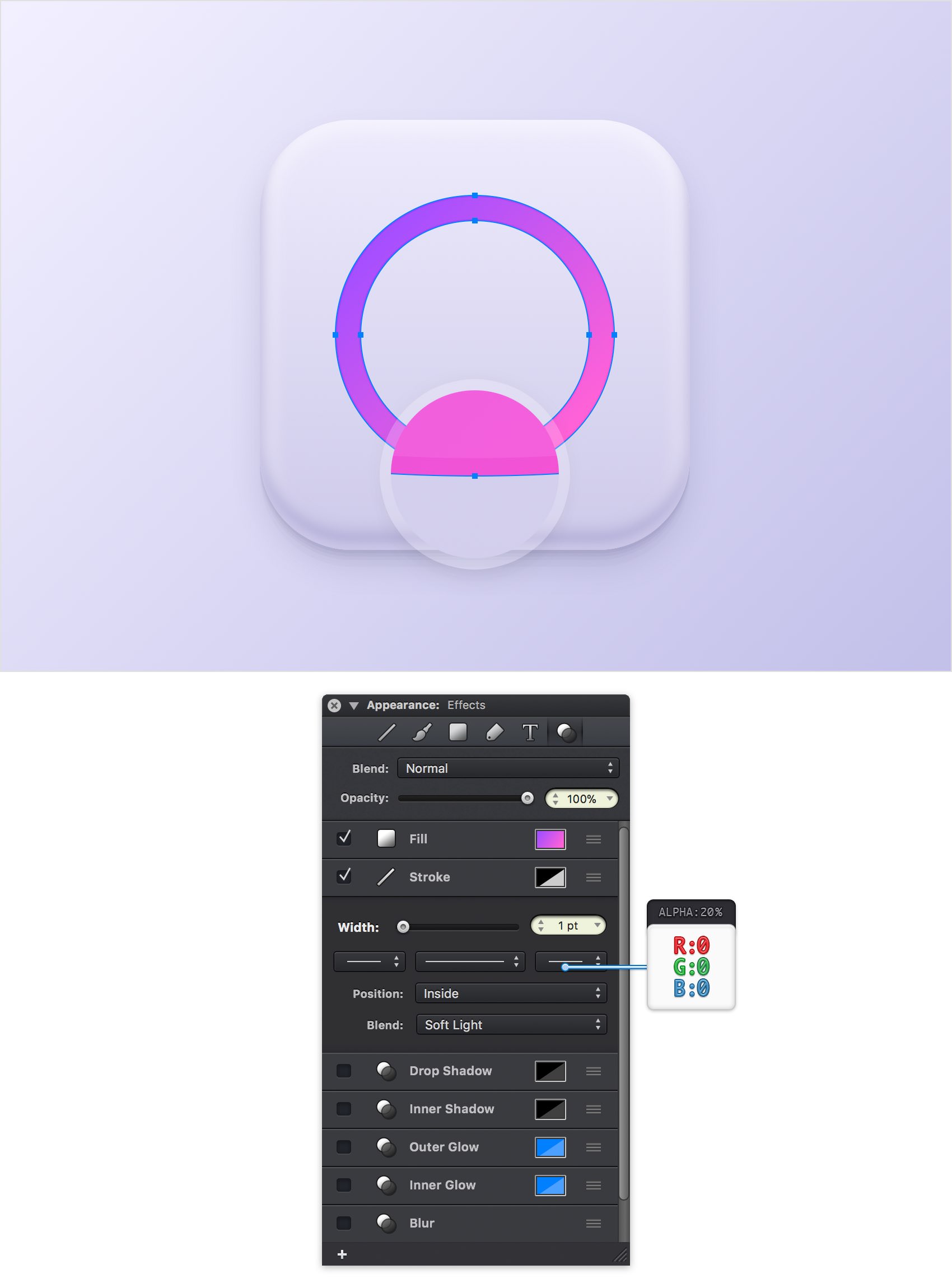
Step 16
Make sure that your circle is still selected and keep focusing on the Effects pane. Activate the existing Drop Shadow effect and select it. Change the Blend Mode to Soft Light and drag the Size slider to 0. Enter 1 in the Y box and then click the color well that stands for this effect. Change the color to white and drag the Alpha slider to 60%.
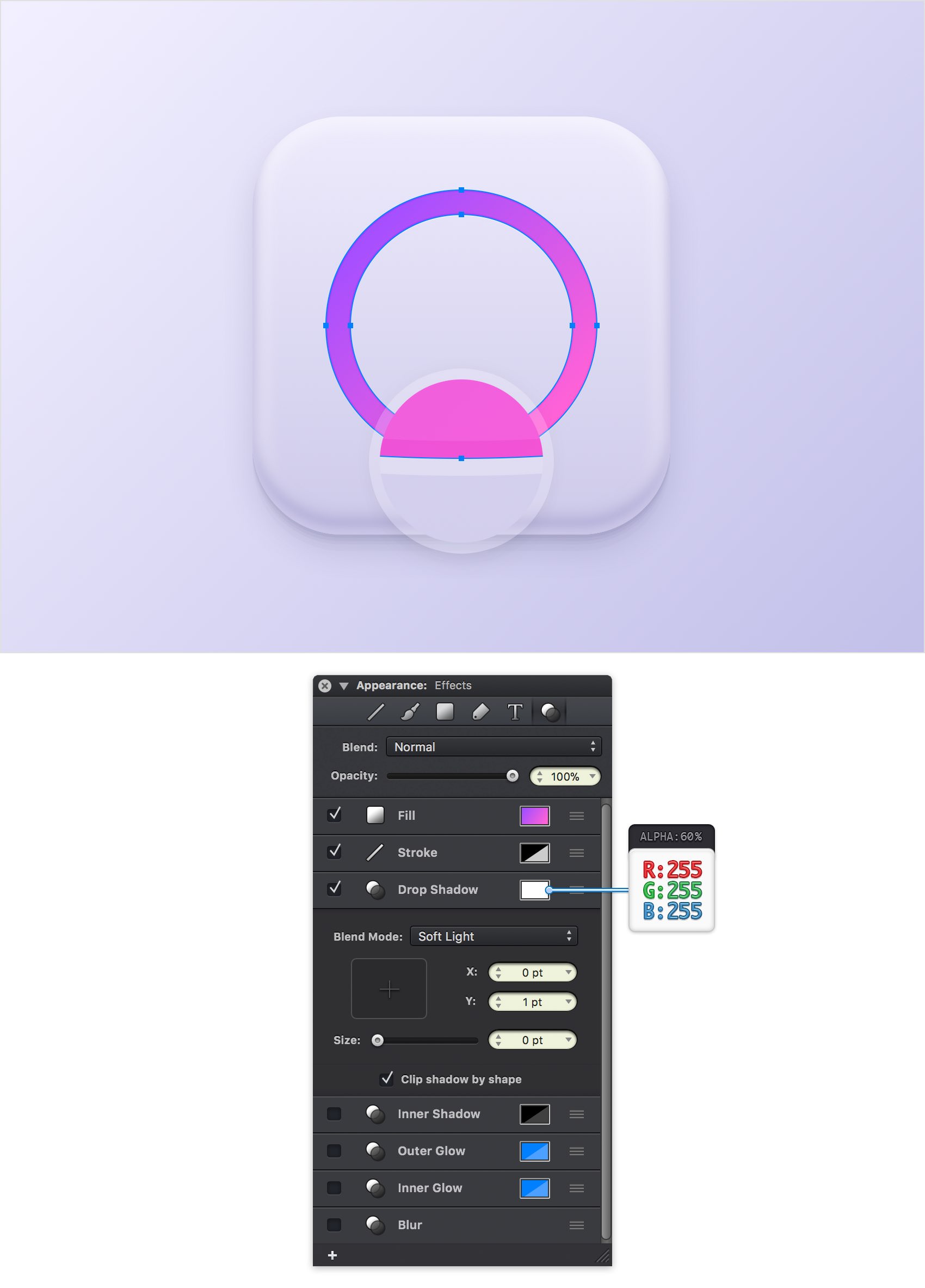
Step 17
Pick the Ellipse Tool (O) and create a 100 px circle. Center this new shape and fill it with the linear gradient shown below.
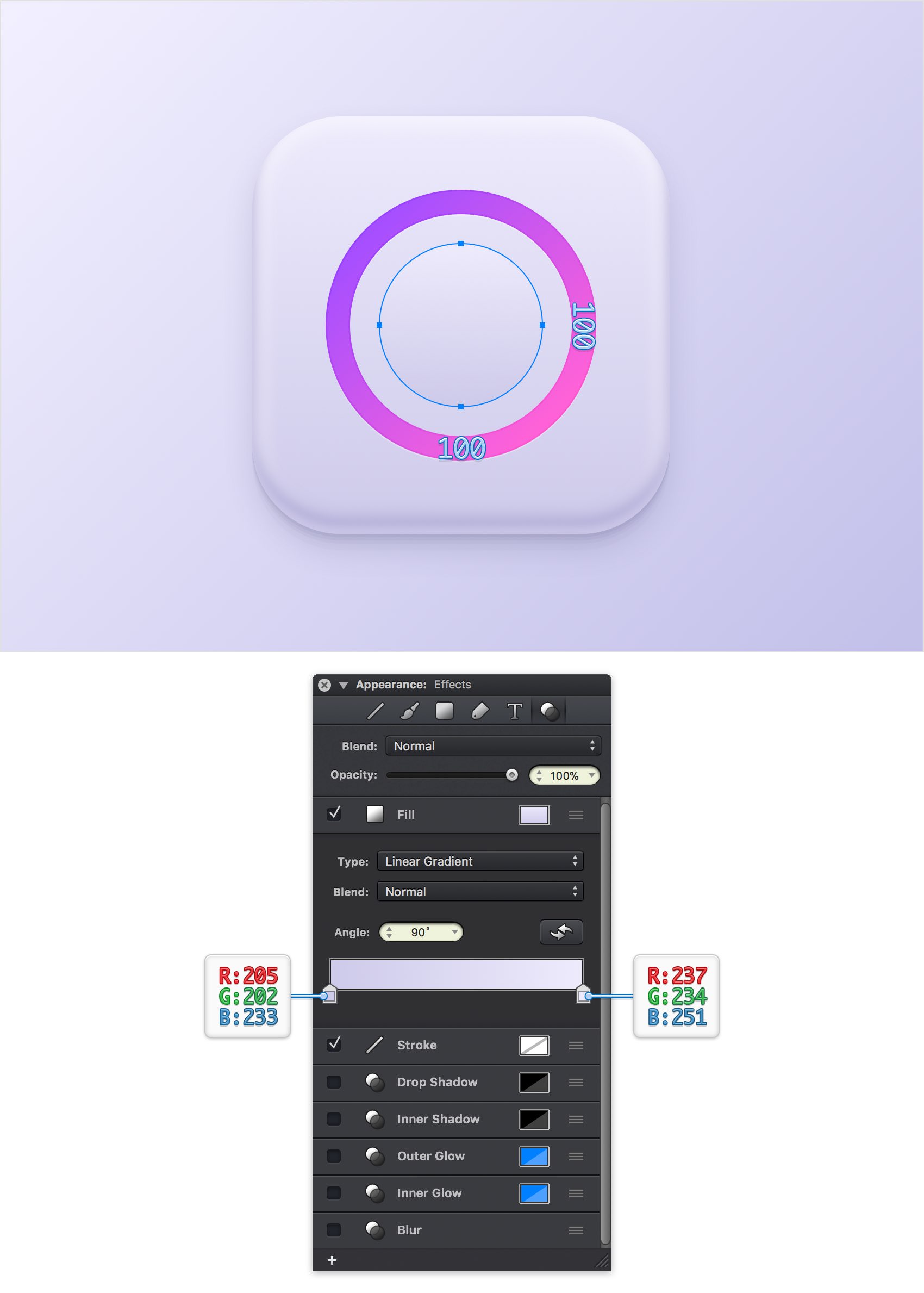
Step 18
Using the Ellipse Tool (O), create a 21 px circle. Fill it with R=152 G=66 B=254 and place it about as shown in the following image. Make sure that it stays selected, focus on the Effects pane and apply the Drop Shadow effect shown below.
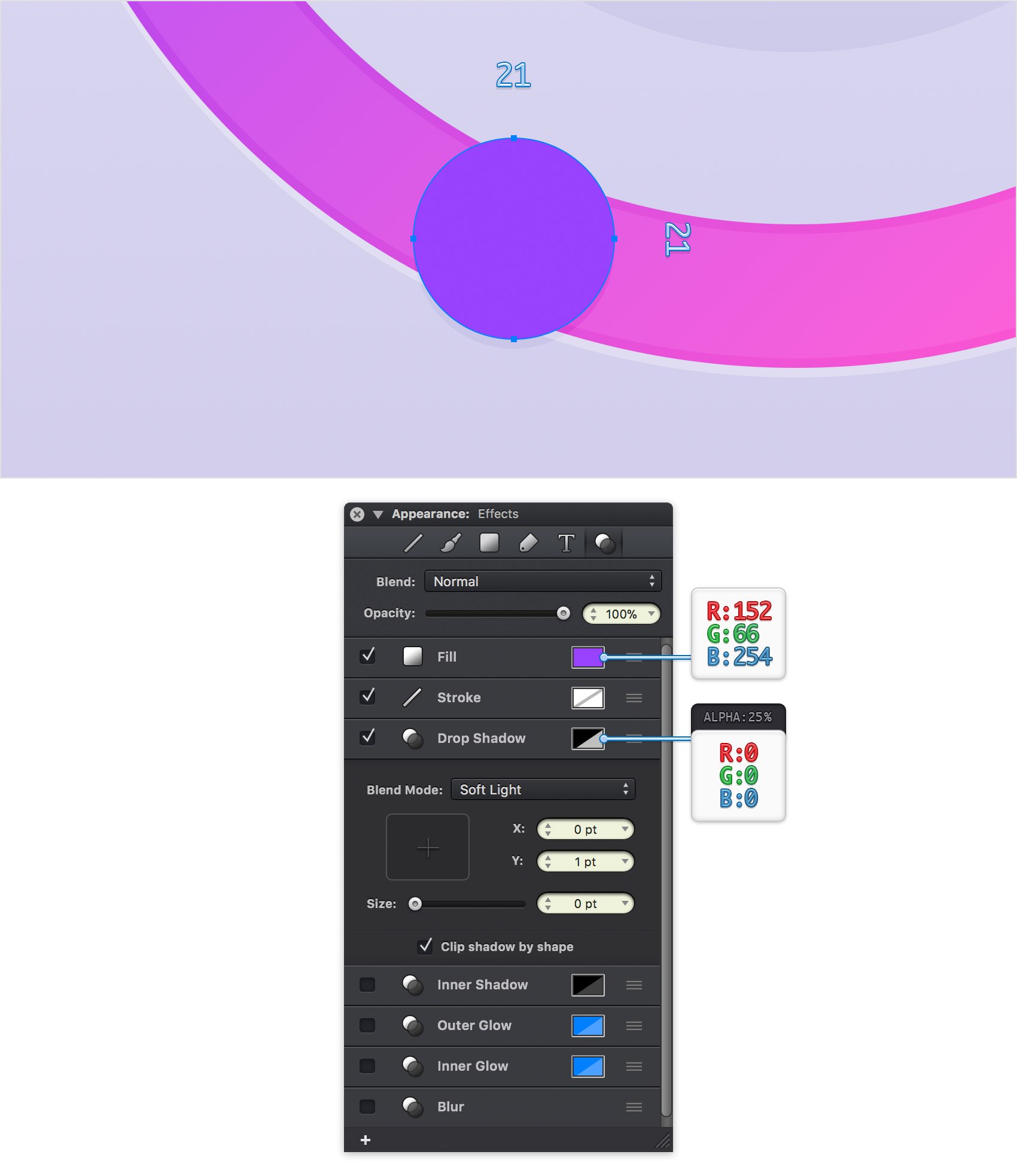
Step 19
Make sure that your purple circle is still selected and keep focusing on the Effects pane. Add a second Drop Shadow effect, select it and enter the attributes shown below.
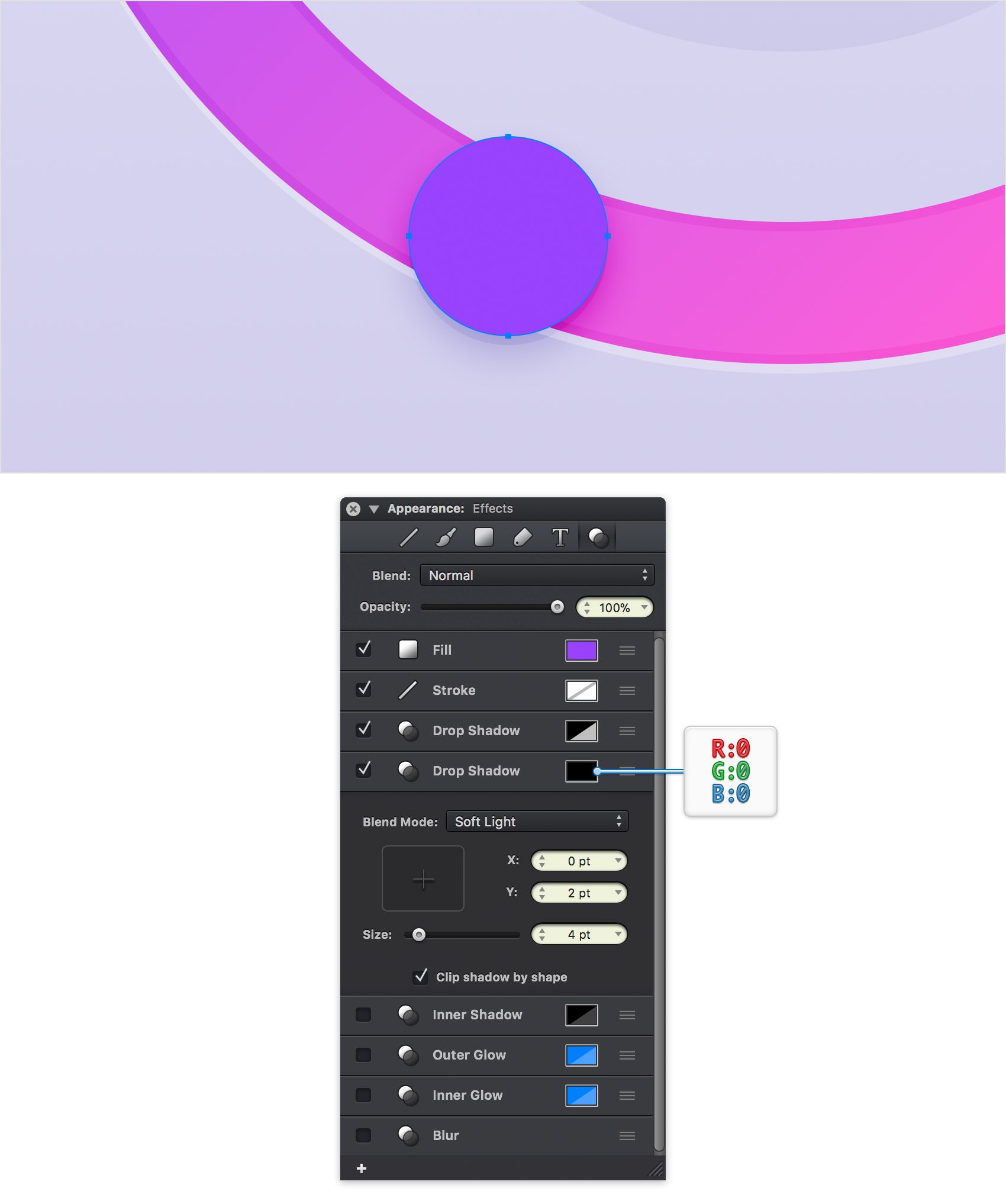
Step 20
Pick the Rounded Rectangle Tool (Shift-M) and set the Corner Radius to 5 pt. Create a 9 x 3 px shape, fill it with R=234 G=232 B=252 and place it about as shown in the first image.
Using the same tool, create a 5 x 8 px shape and place it as shown in the second image.
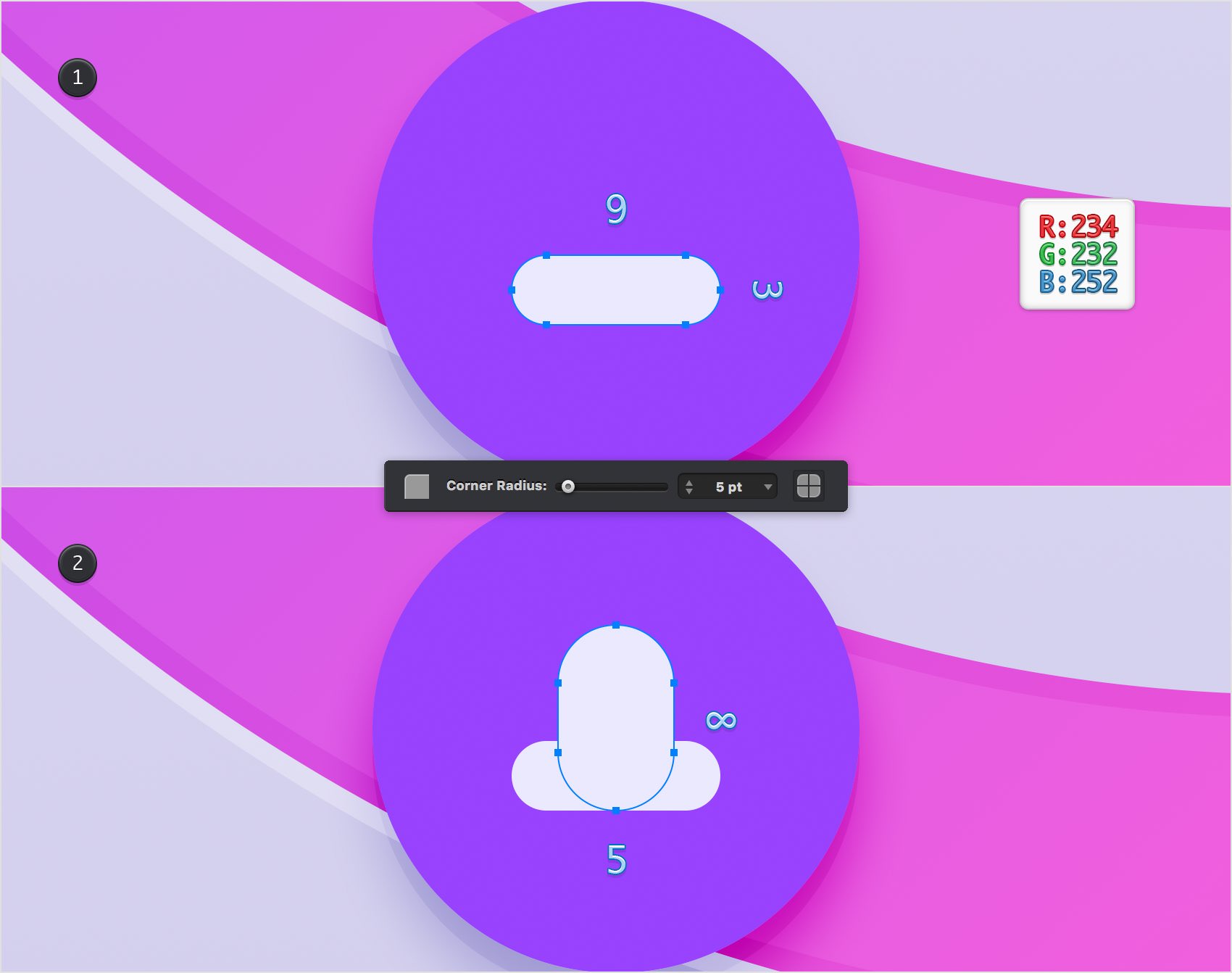
Step 21
Using the Ellipse Tool (O), create a 3 px and a 1 px circle. Fill both shapes with R=234 G=232 B=252 and place them as shown in the following images.
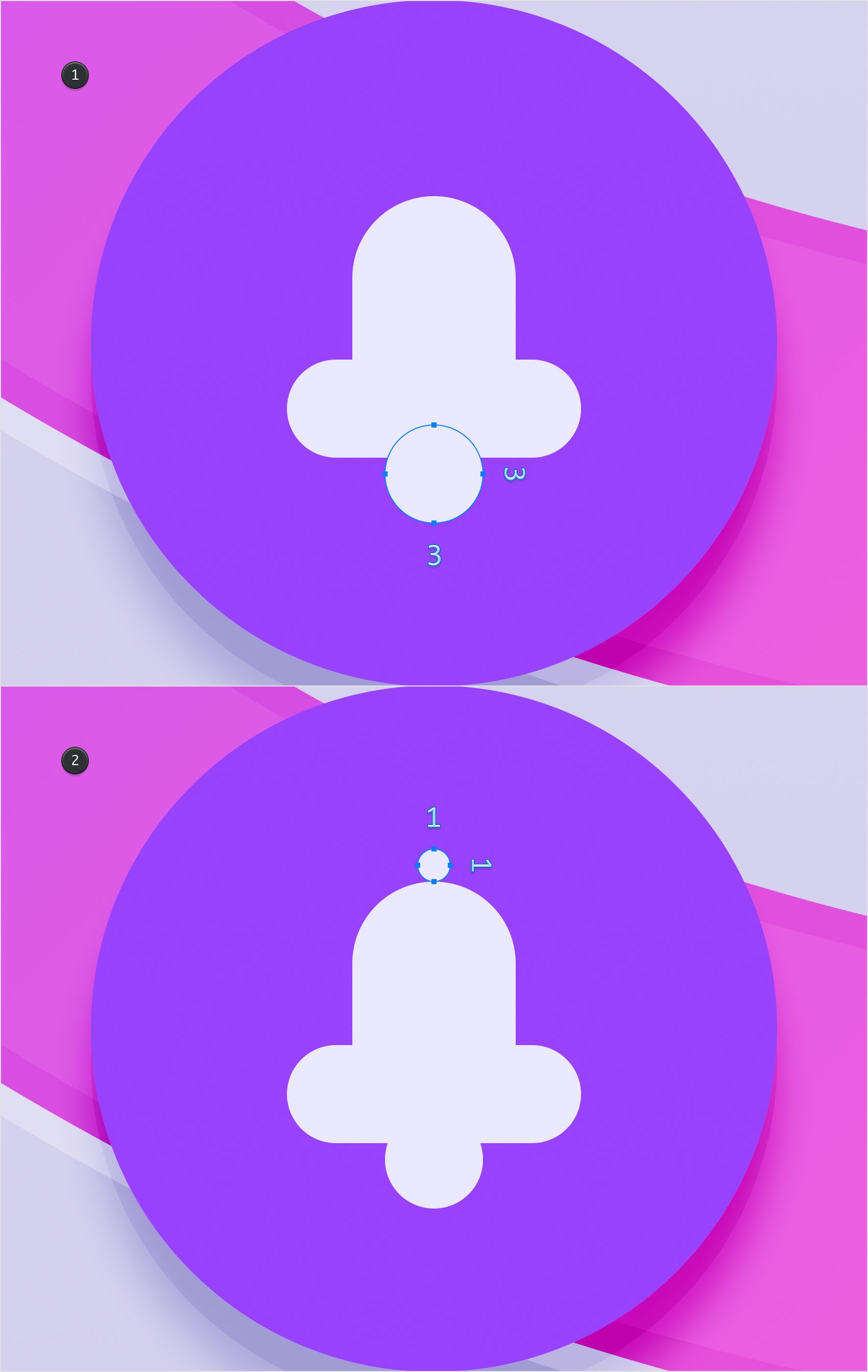
Step 22
Pick the Rectangle Tool (M) and create a 5 x 1 px shape. Fill it with R=152 G=65 B=254 and place it as shown in the first image. Keep focusing on this tiny rectangle and pick the Path Selection Tool (A). Select the bottom, right anchor point and remove it using the Delete key.
Reselect the Rectangle Tool (M) and create another 5 x 1 px shape. Fill it with R=152 G=65 B=254 and place it as shown in the third image. Switch back to the Path Selection Tool (A) and delete top, left anchor point. In the end, things should look like in the fourth image.
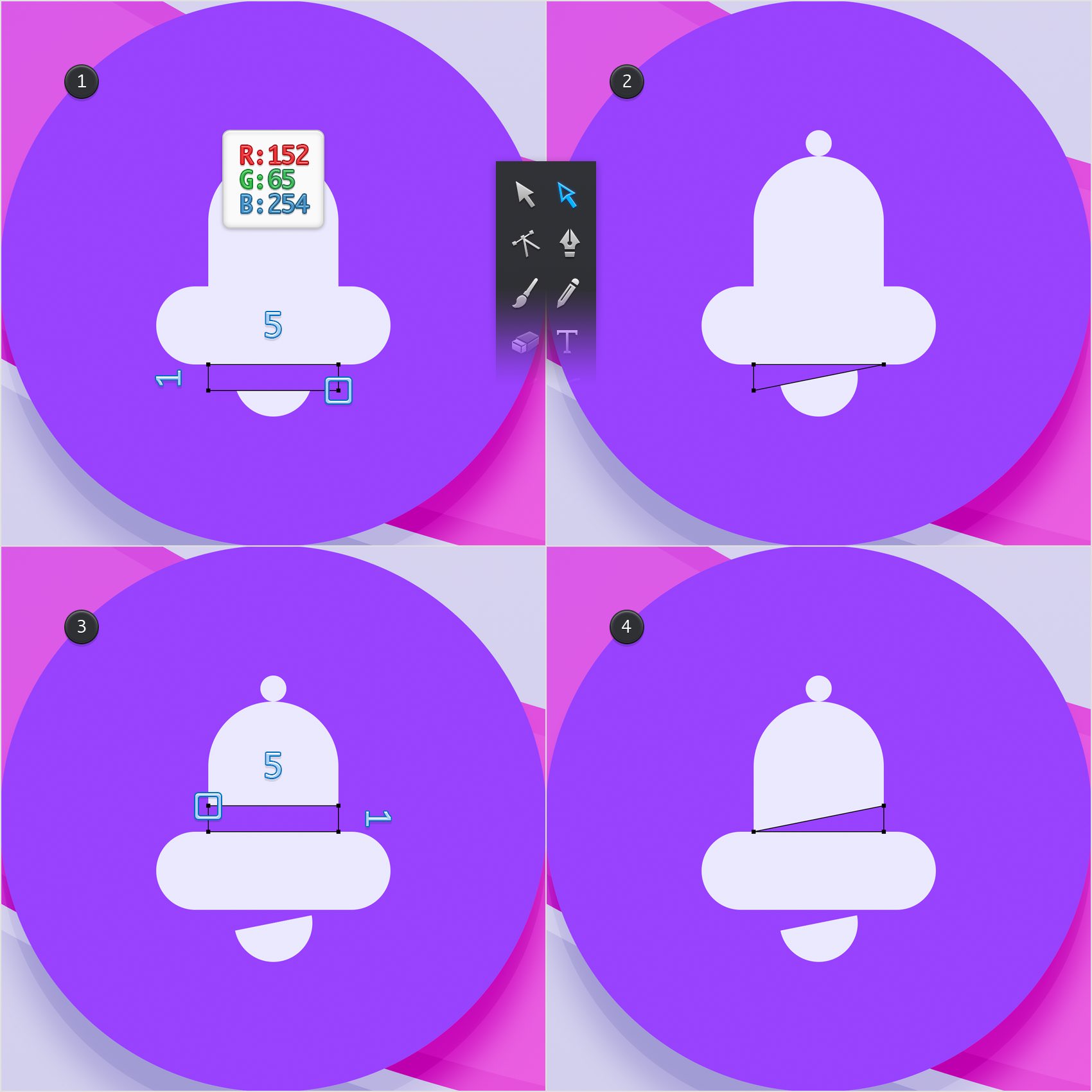
Step 23
Focus on the Layers panel and add a third layer. Name it "Grid&Text" and select it.
Pick the Ellipse Tool (O), create a 4 px circle and fill it with R=147 G=144 B=202. Center this new shape vertically using the Vertical Centers command from the Alignment pane and then drag it 10 px below that purple-pink shape. Make a copy of this tiny circle or create a new one, center it vertically and drag it 10 px above that purple-pink shape.
Create a third 4 px circle and fill it with the same color. Center this shape horizontally using the Horizontal Centers command and drag it 10 px left from that purple-pink shape. Make a copy of this circle and drag it 10 px right from that purple-pink shape. In the end, things should look like in the following image.
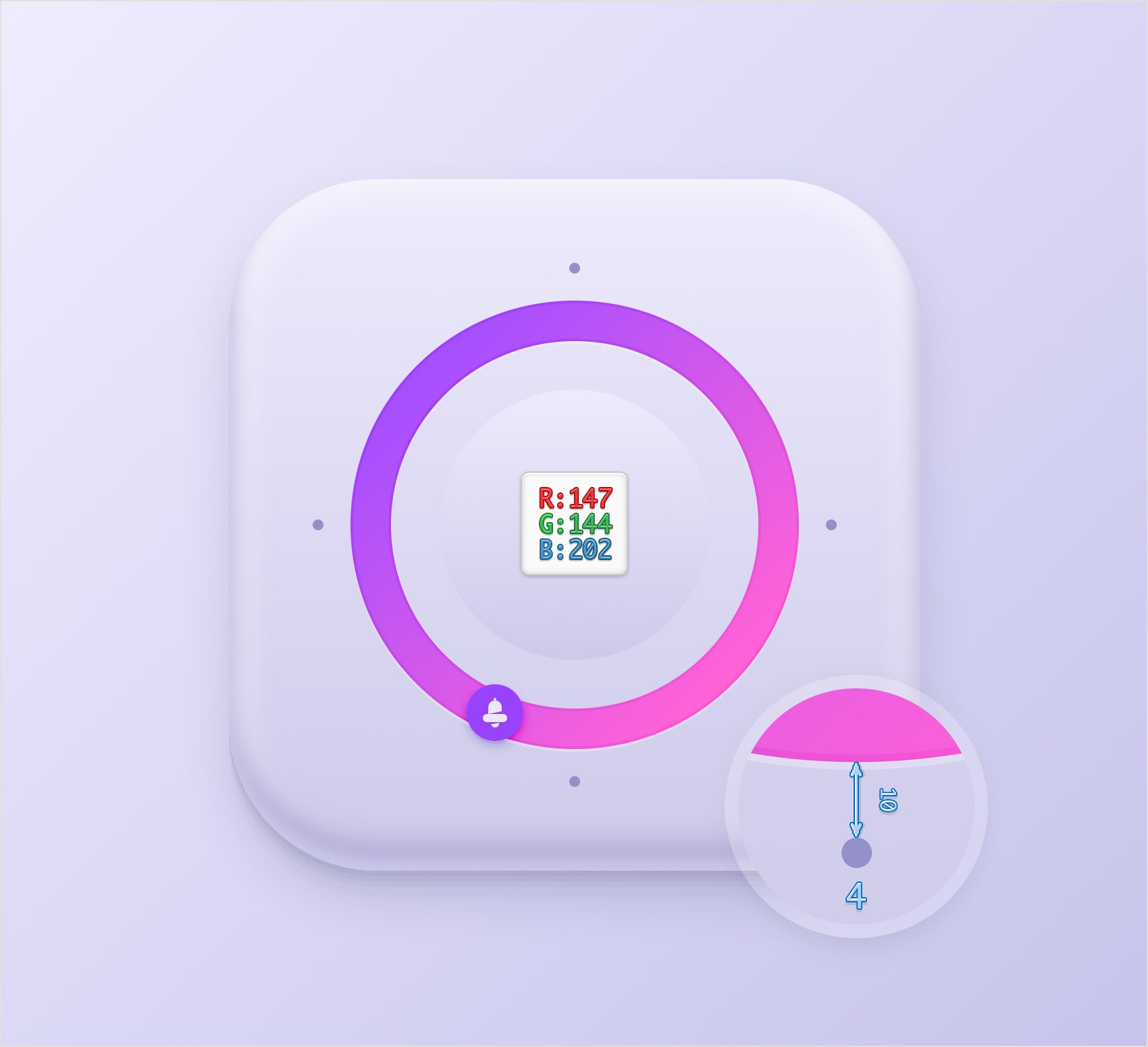
Step 24
Select the four tiny circles and rotate them 45 degrees using the Rotate Tool (R). Holding the Shift key while dragging will constrain the rotation to 15 degrees increment.

Step 25
Pick the Type Tool (T), click on your canvas and go to the Text pane from the Appearance panel. Select the Helvetica Neue font, change the style to Thin and set the size to 25 pt. Type the "12" piece of text and set its color to R=146 G=144 B=202 . Place your text as shown in the first image and then add the other three pieces as shown in the second image.
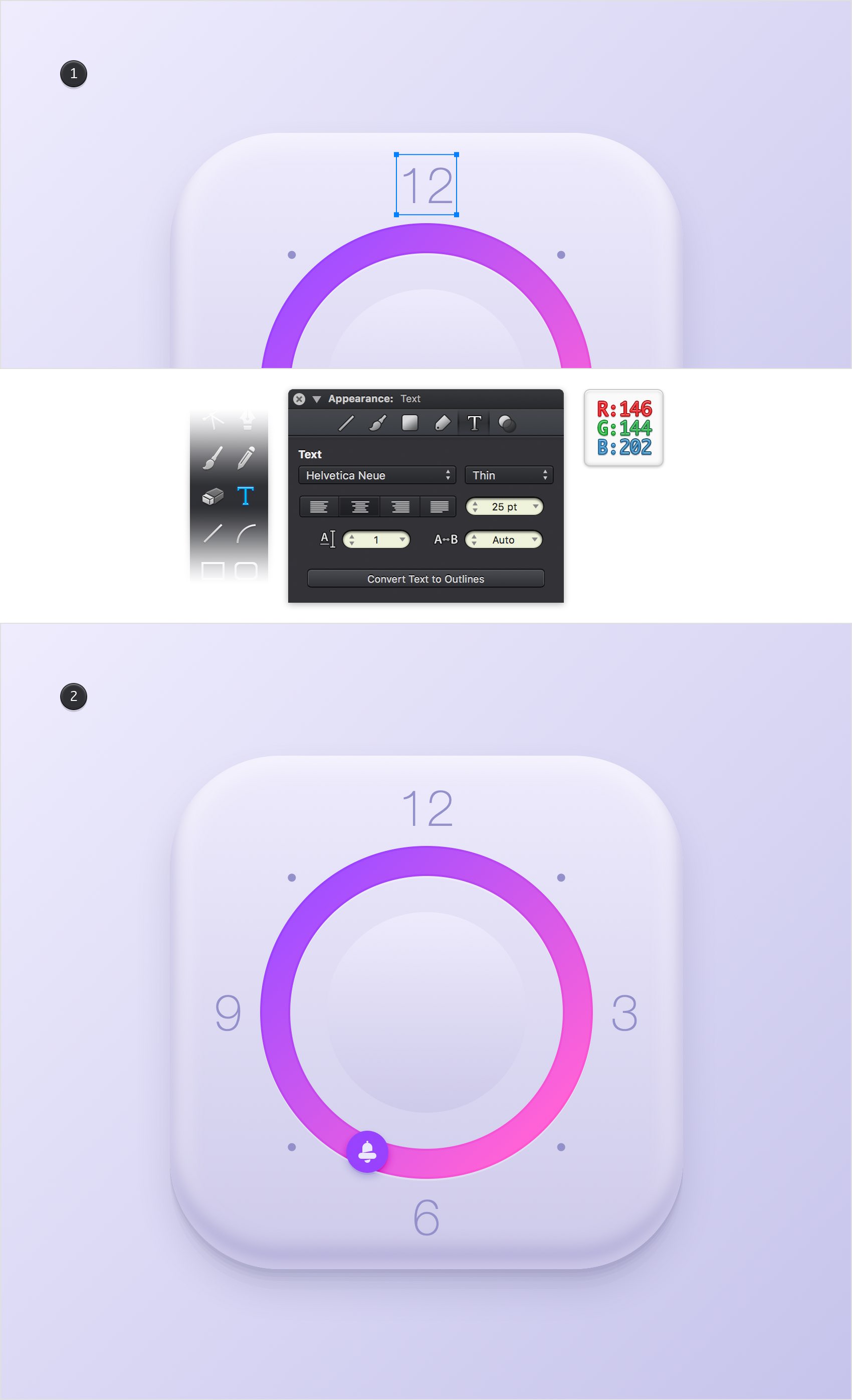
Step 26
Pick the Ellipse Tool (O) and create a 30 px circle. Center this new shape and fill it with the linear gradient shown below.
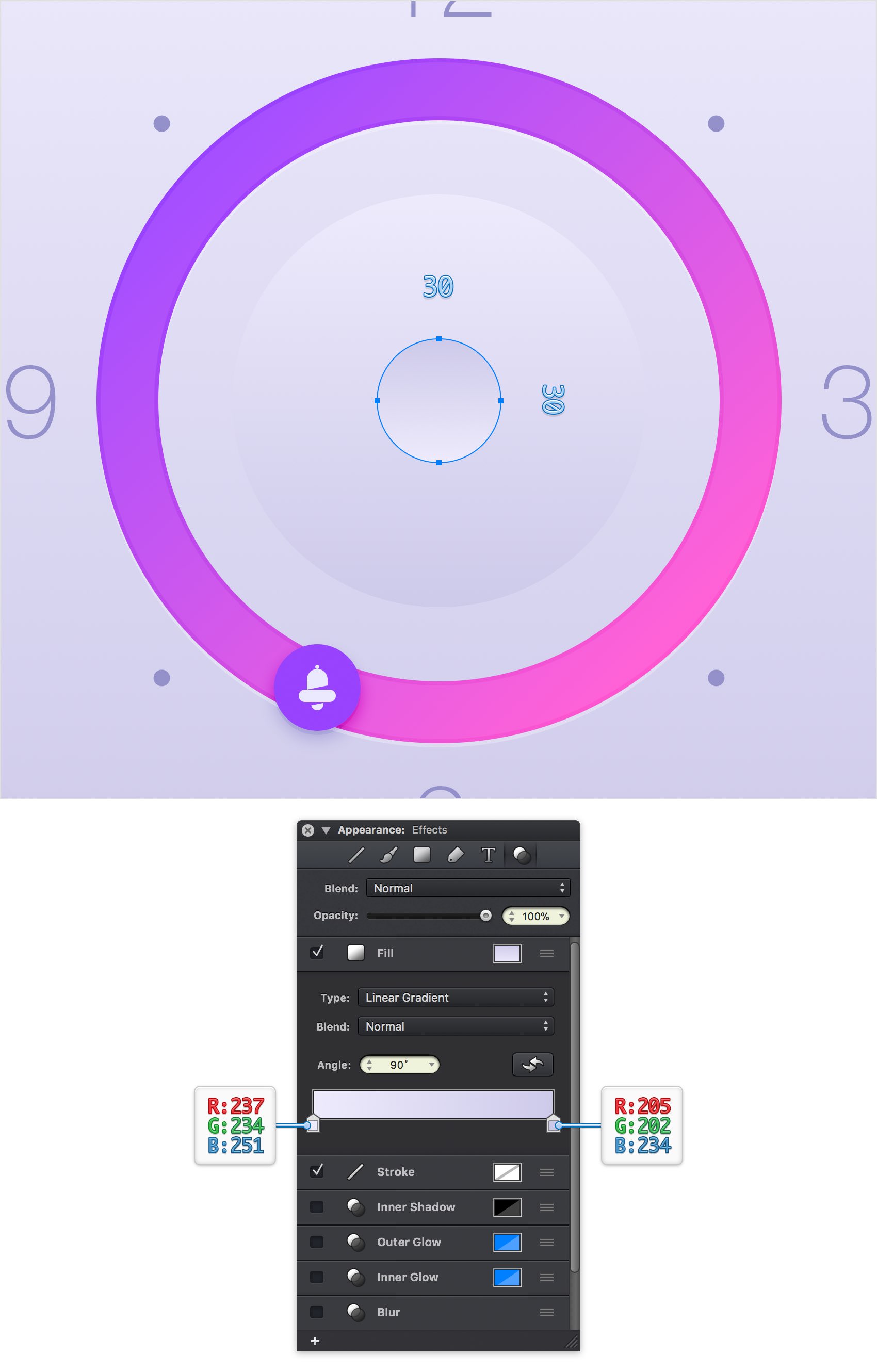
Step 27
Focus on the Layers panel and add a fourth layer. Name it "Hands" and select it.
Using the Ellipse Tool (O), create a 16 px circle, fill it with green and center it. Using the same tool, create a 6 px green circle. Center it vertically and drag it 10 px below the top side of that purple-pink shape, as shown in the first image.
Pick the Rectangle Tool (M) and create a 16 x 55 px shape. Fill it with yellow and place it as shown in the second image. Focus on the top side of this new rectangle and pick the Path Selection Tool (A). Select both anchor points and switch to the Scale Tool (S). Hold the Shift key and drag the selected anchor points 5 px from outside to the inside as shown in the third image.
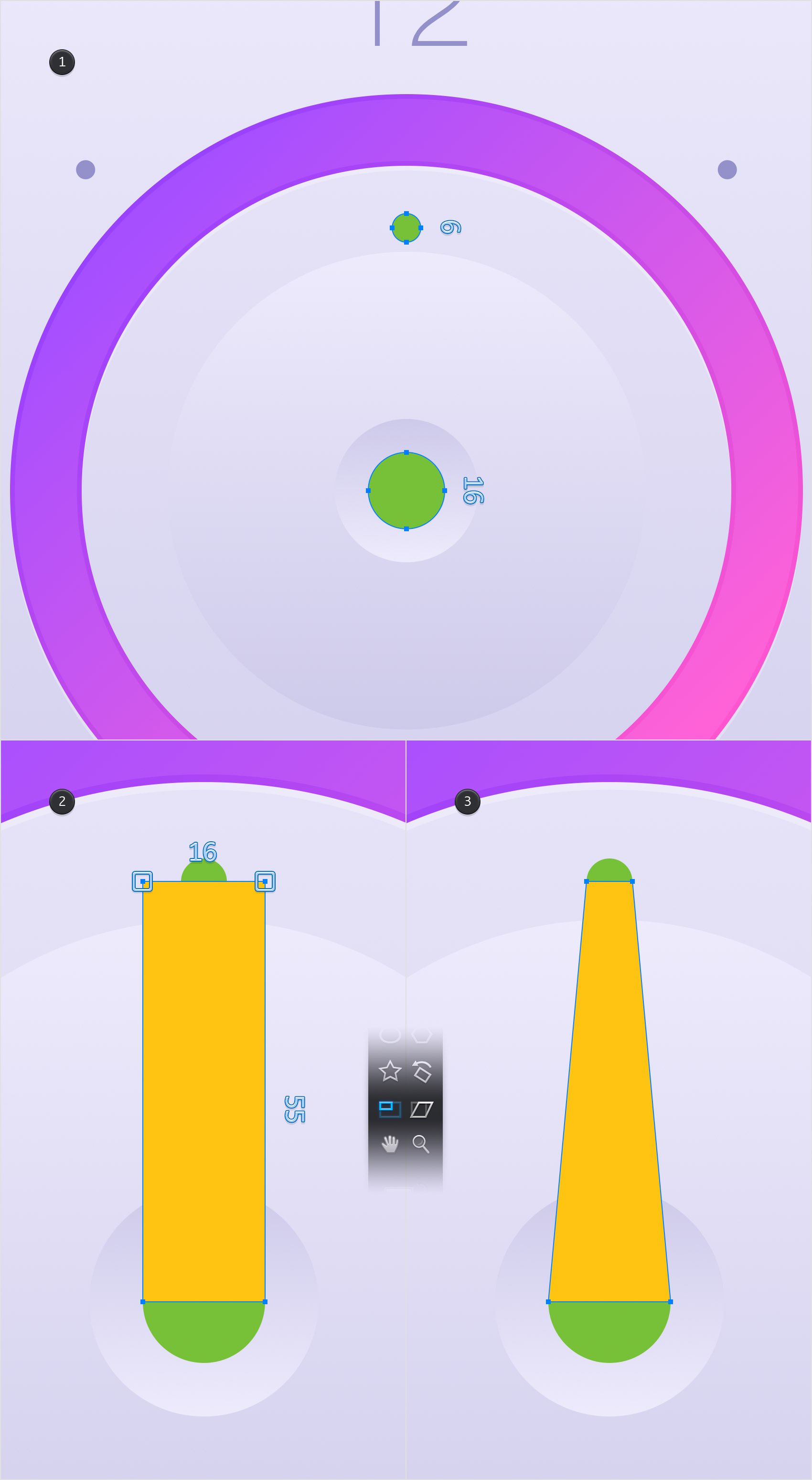
Step 28
Select the yellow shape along with the two green circles and click the Union command from the Path Tools pane.
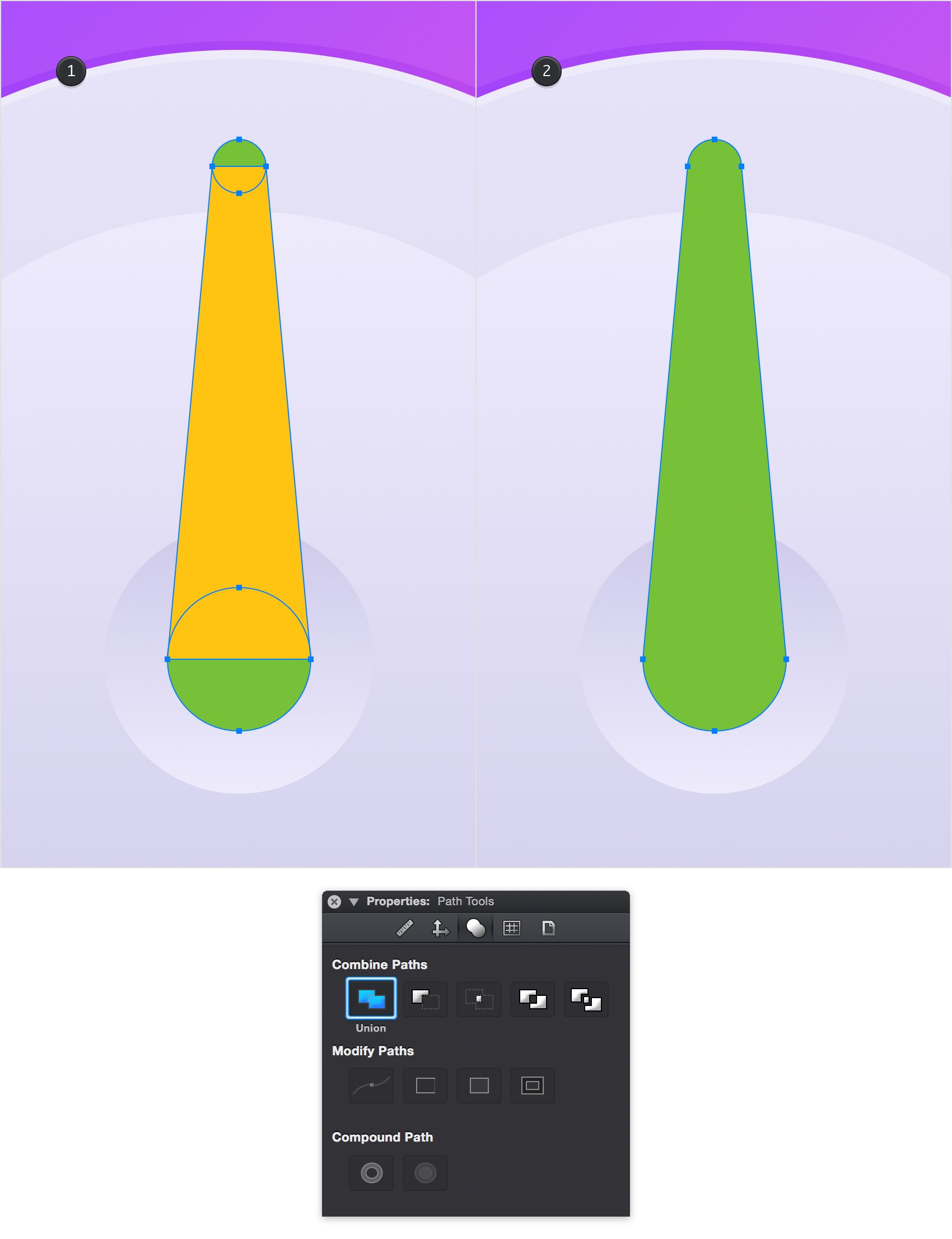
Step 29
Using the Ellipse Tool (O), create a 16 px circle, fill it with blue and center it. Using the same tool, create a 6 px blue circle. Center it vertically and drag it 4 px above that purple-pink shape, as shown in the first image.
Pick the Rectangle Tool (M) and create a 16 x 90 px shape. Fill it with yellow and place it as shown in the second image. Focus on the top side of this new rectangle and pick the Path Selection Tool (A). Select both anchor points and switch to the Scale Tool (S). Hold the Shift key and drag the selected anchor points 5 px from outside to the inside as shown in the third image.

Step 30
Select the yellow shape along with the two blue circles and click the Union command from the Path Tools pane.
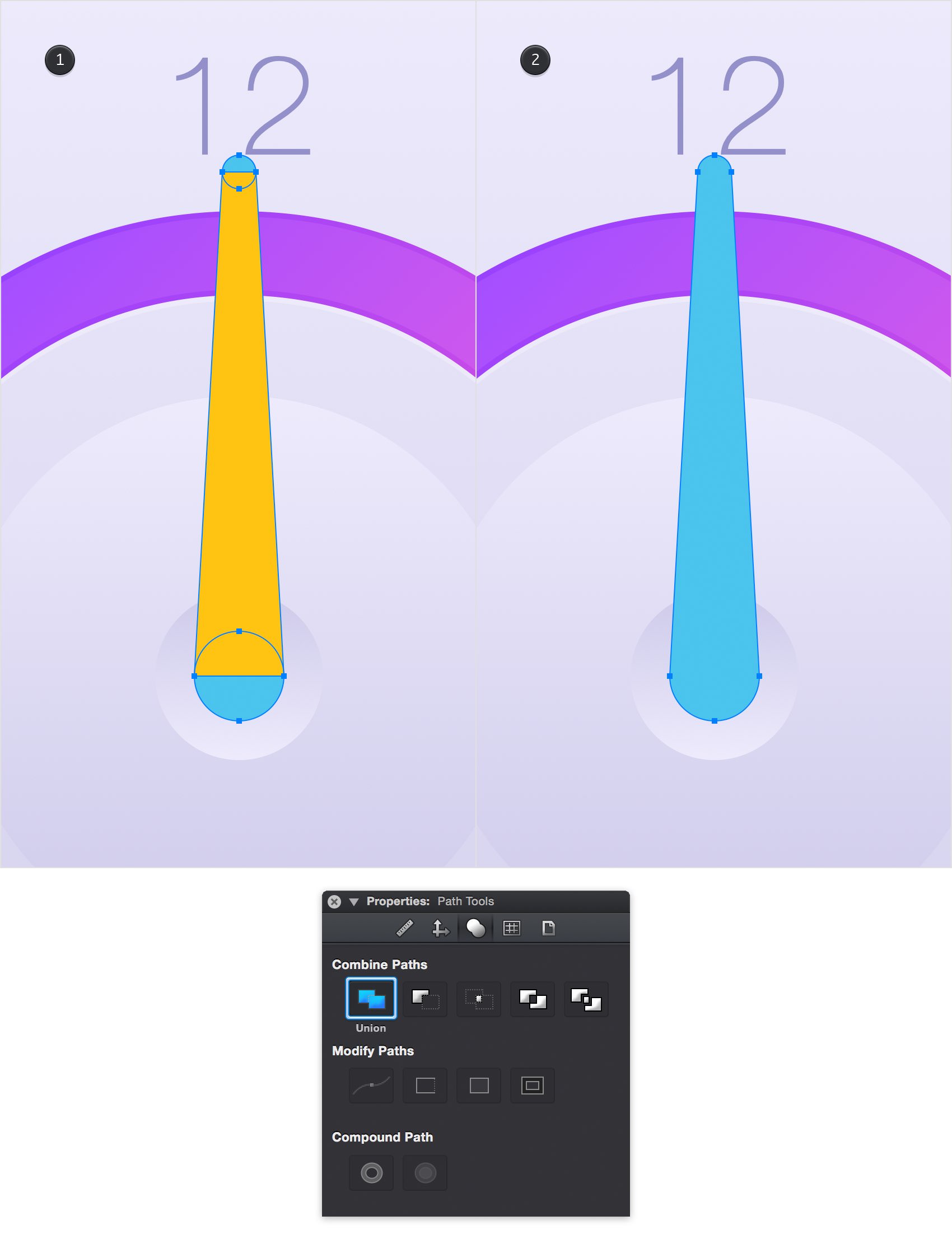
Step 31
Using the Ellipse Tool (O), create a 6 px circle and fill it with red. Center this new shape vertically and then drag it 6 px below the blue shape, as shown in the first image. Using the same tool, create a 2 px red circle. Center it vertically and place it as shown in the first image.
Pick the Rectangle Tool (M) and create a 6 x 107 px shape. Fill it with yellow and place it as shown in the second image. Focus on the top side of this new rectangle and pick the Path Selection Tool (A). Select both anchor points and switch to the Scale Tool (S). Hold the Shift key and drag the selected anchor points 2 px from outside to the inside as shown in the third image.
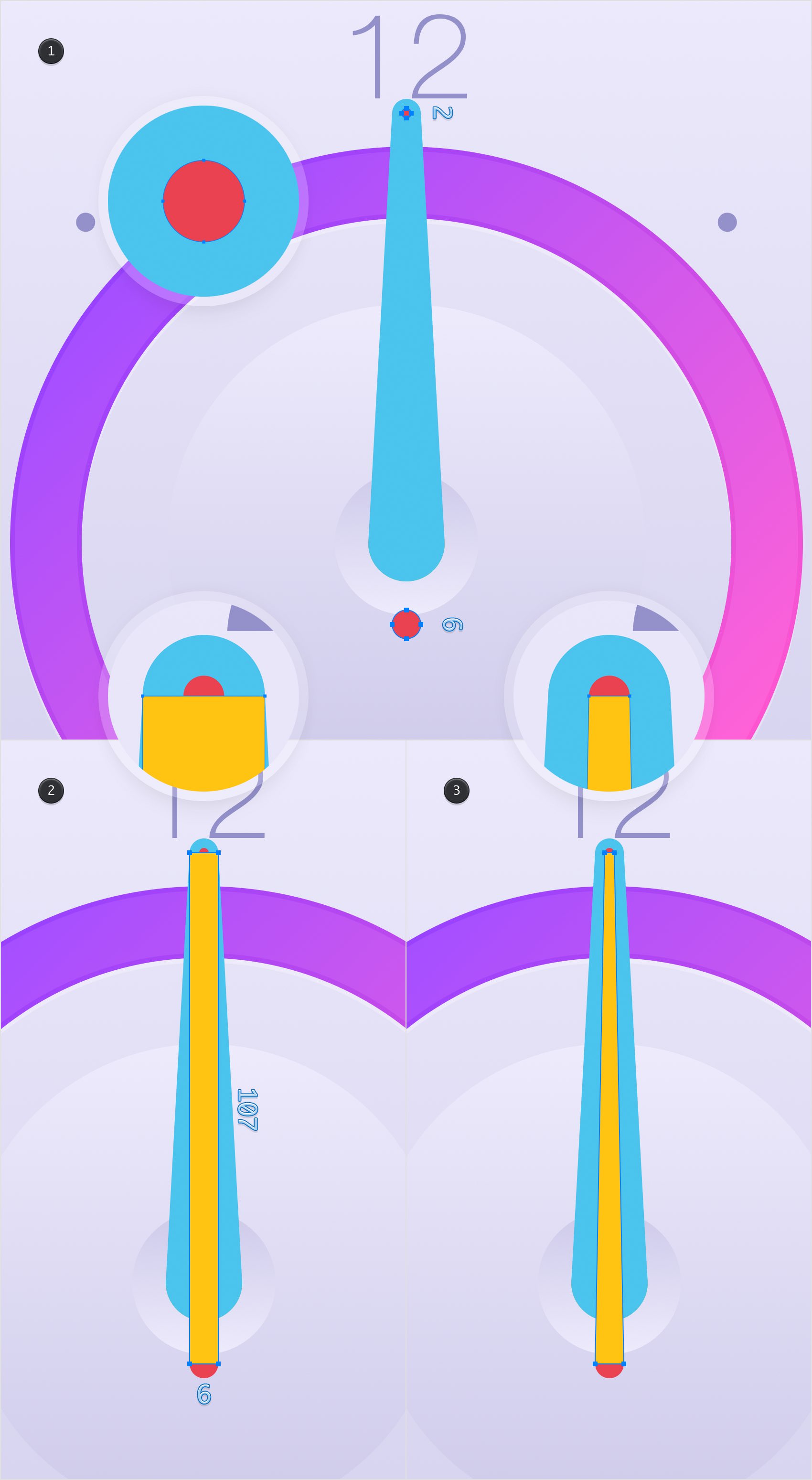
Step 32
Select the yellow shape along with the two red circles and click the Union command from the Path Tools pane.
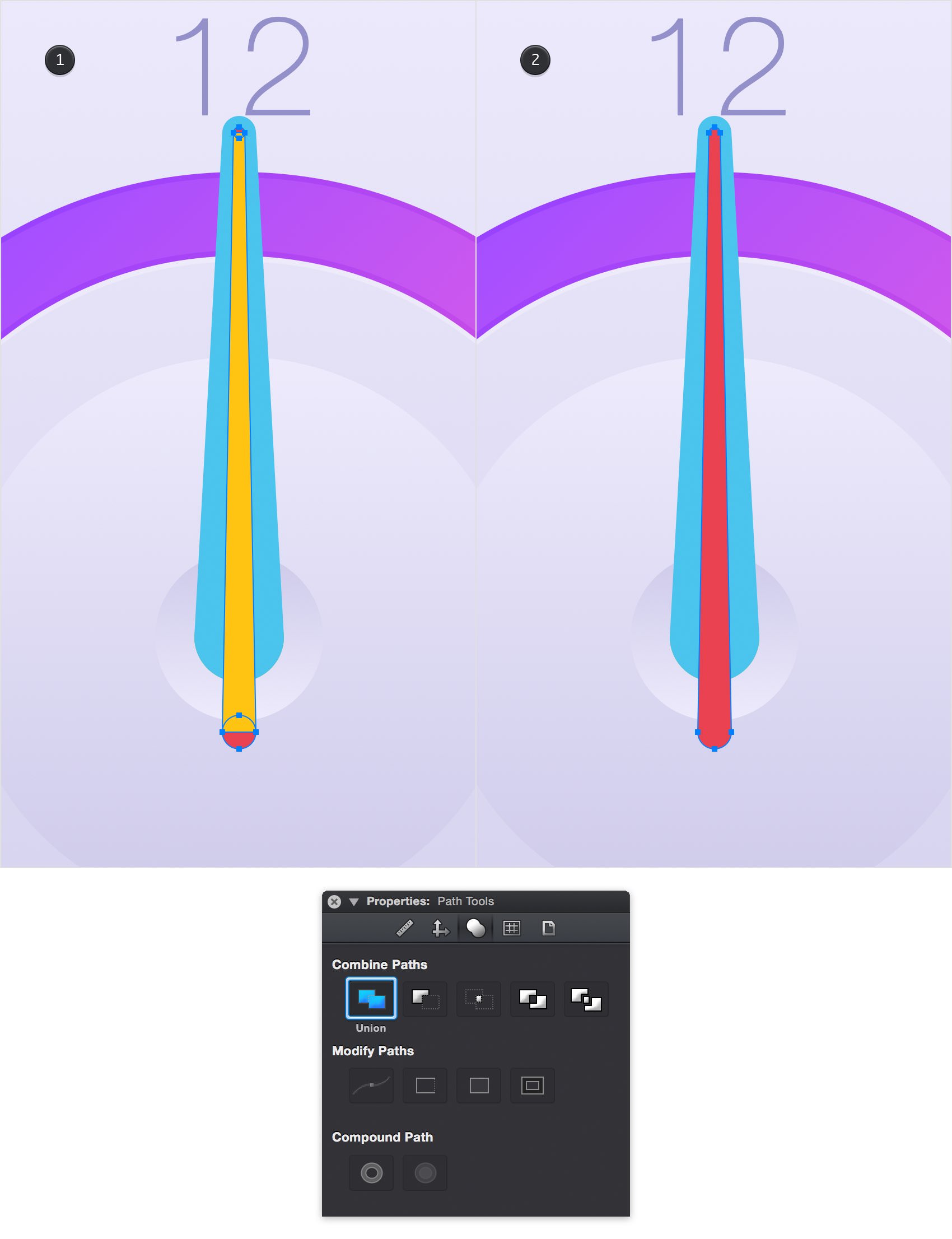
Step 33
Pick the Ellipse Tool (O) and create a 16 px circle. Center this new shape and fill it with the linear gradient shown below.
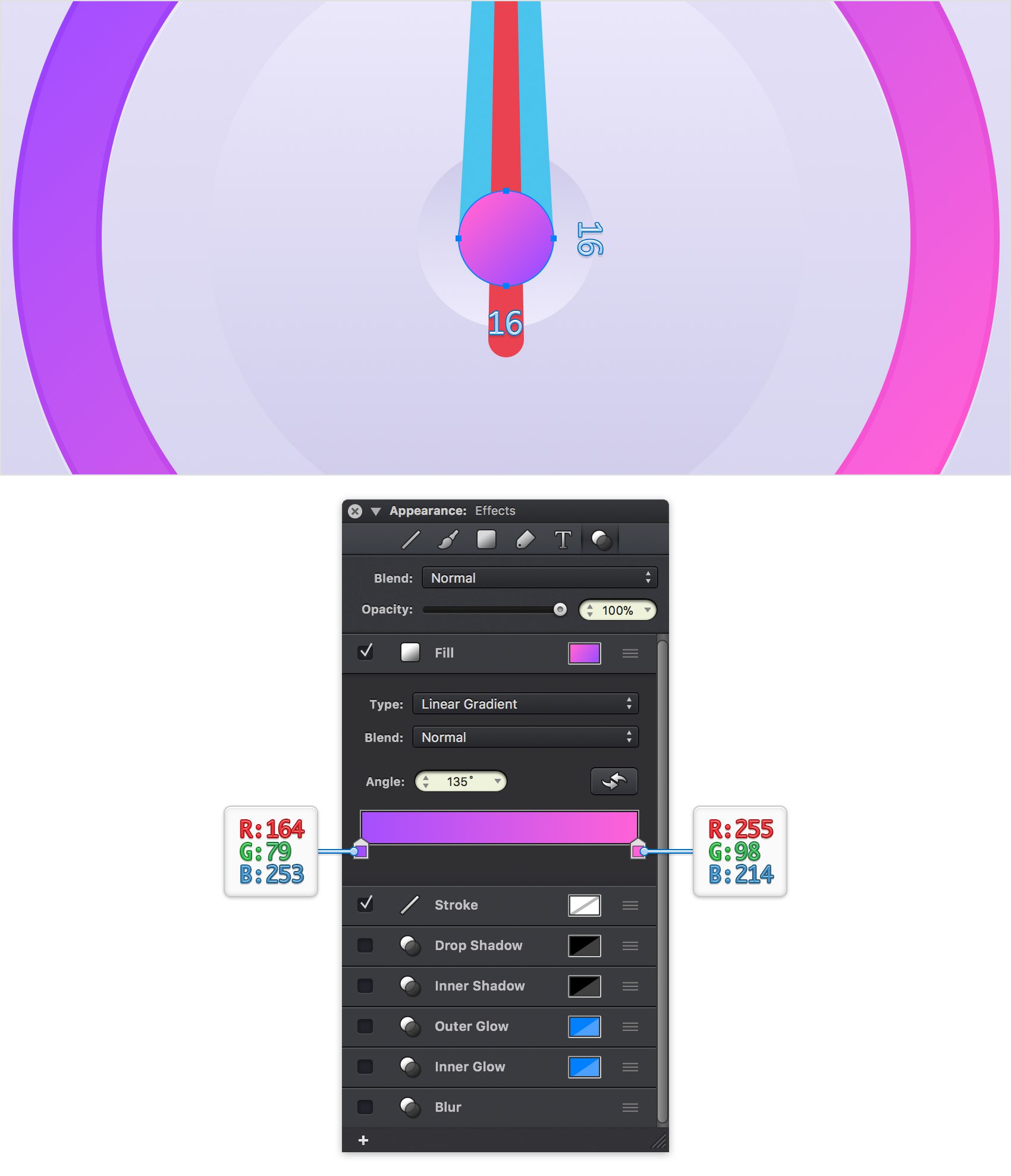
Step 34
Pick the Ellipse Tool (O) and create a 6 px circle. Center this new shape and fill it with white. Make sure that it stays selected and focus on the Effects pane. Activate the existing Drop Shadow effect and enter the attributes shown below.
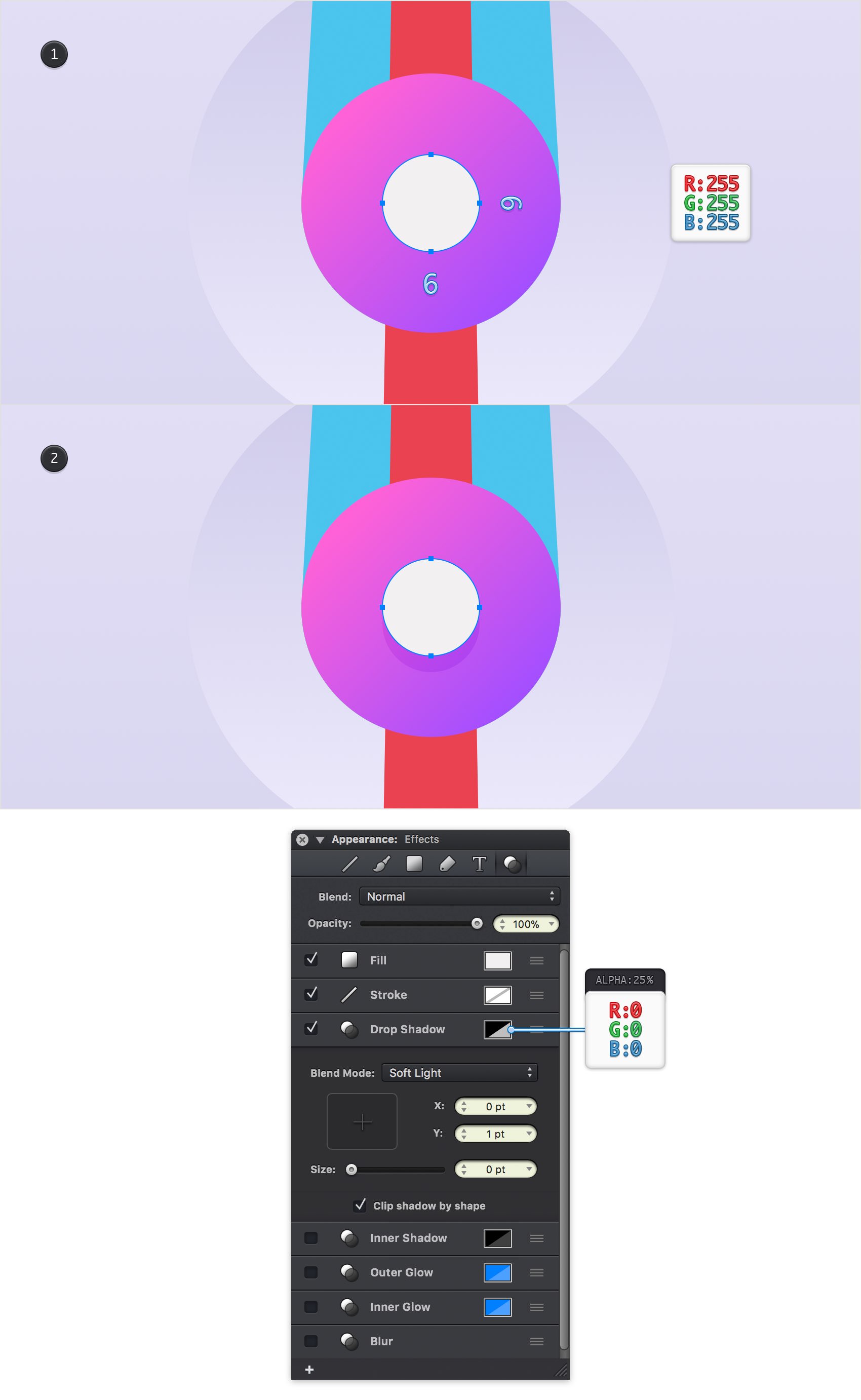
Step 35
Make sure that your white circle is still selected and keep focusing on the Effects pane. Add a second Drop Shadow effect, select it and enter the attributes shown below.
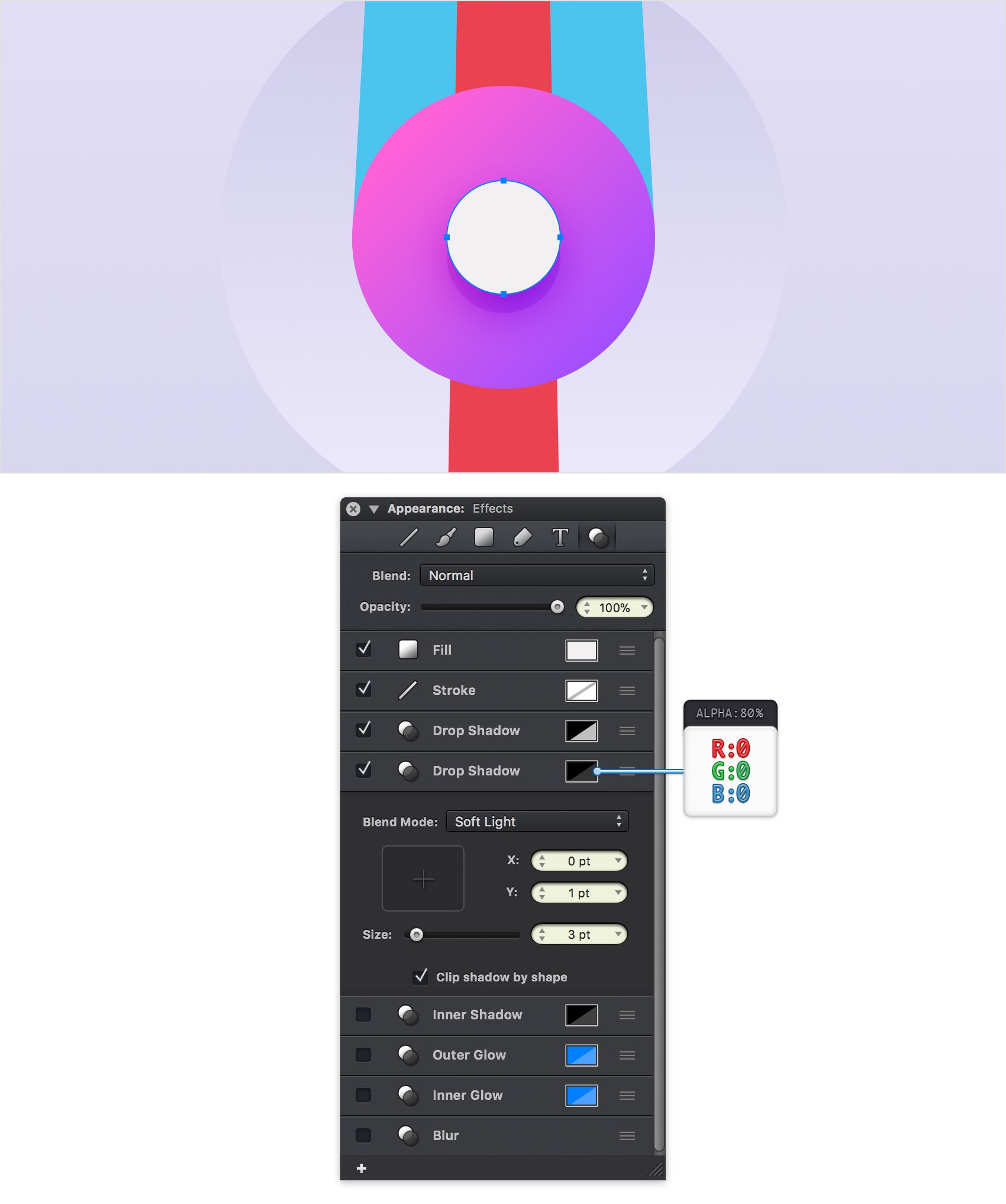
Step 36
Make sure that your white circle is still selected and keep focusing on the Effects pane. Activate the existing Inner Shadow effect and enter the attributes shown below.
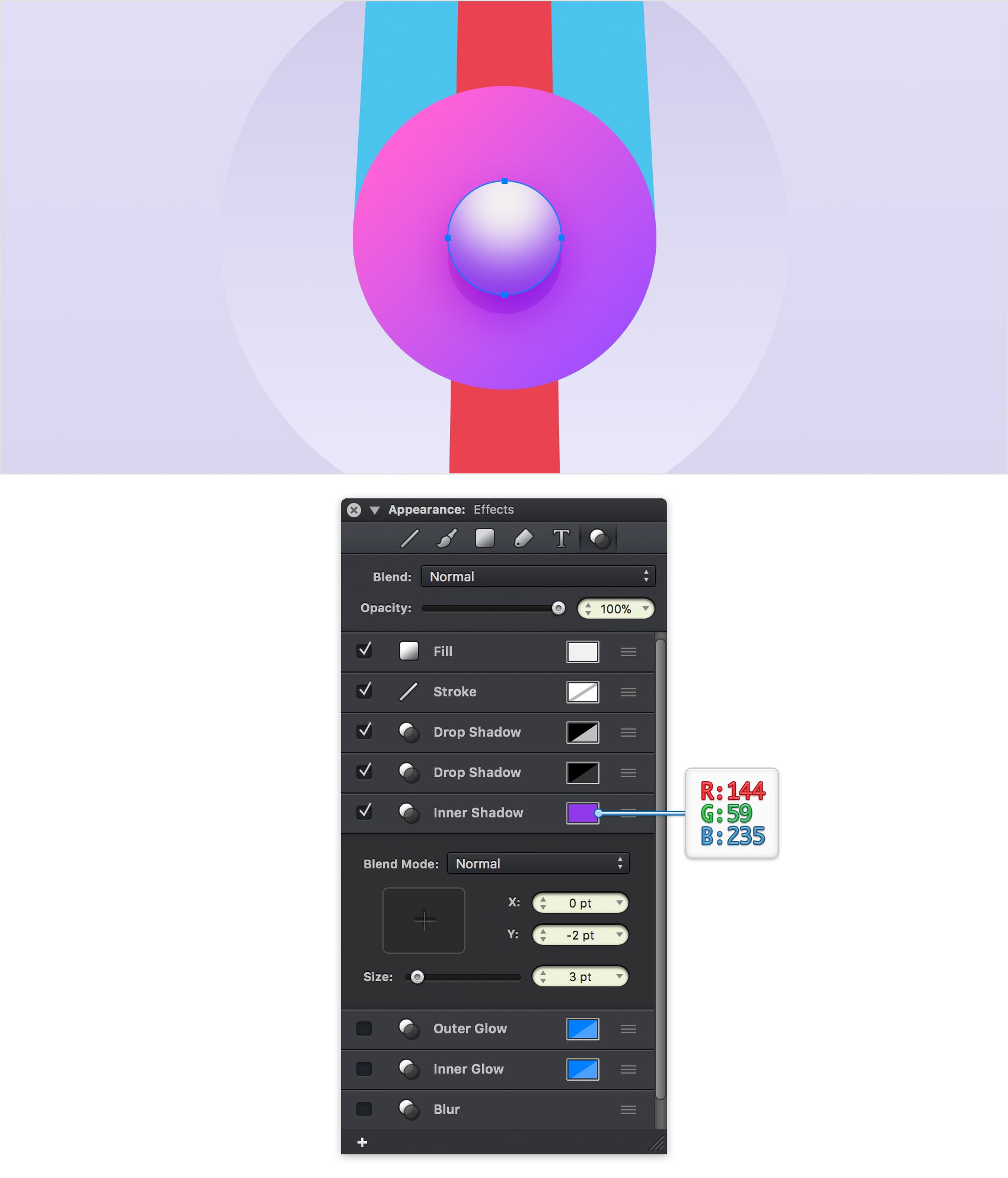
Step 37
Make sure that your white circle is still selected and keep focusing on the Effects pane. Add a second Inner Shadow effect, select it and enter the attributes shown below.
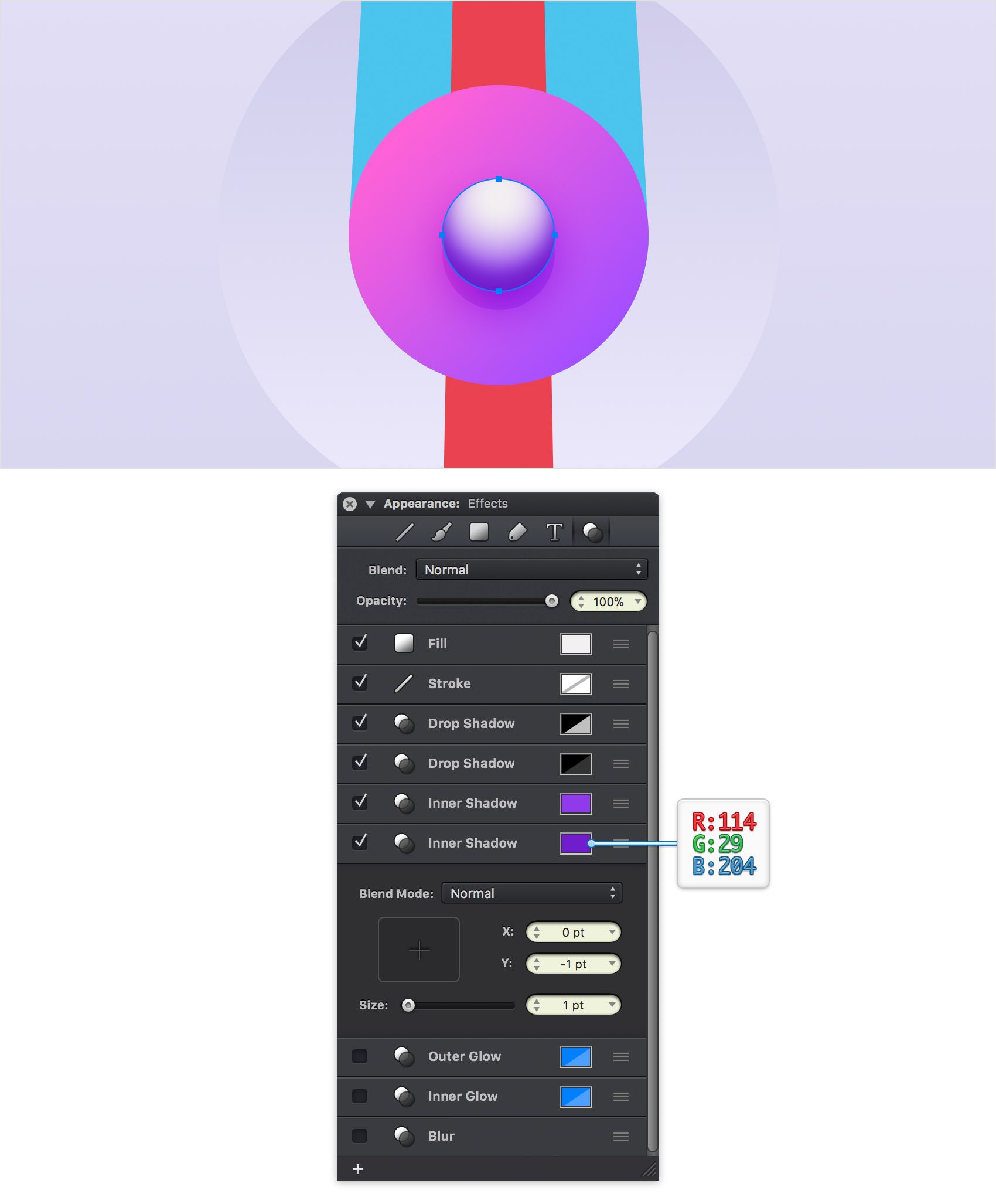
Step 38
Pick the Ellipse Tool (O) and create a 2 px circle. Center this new shape and fill it with R=87 G=87 B=87.
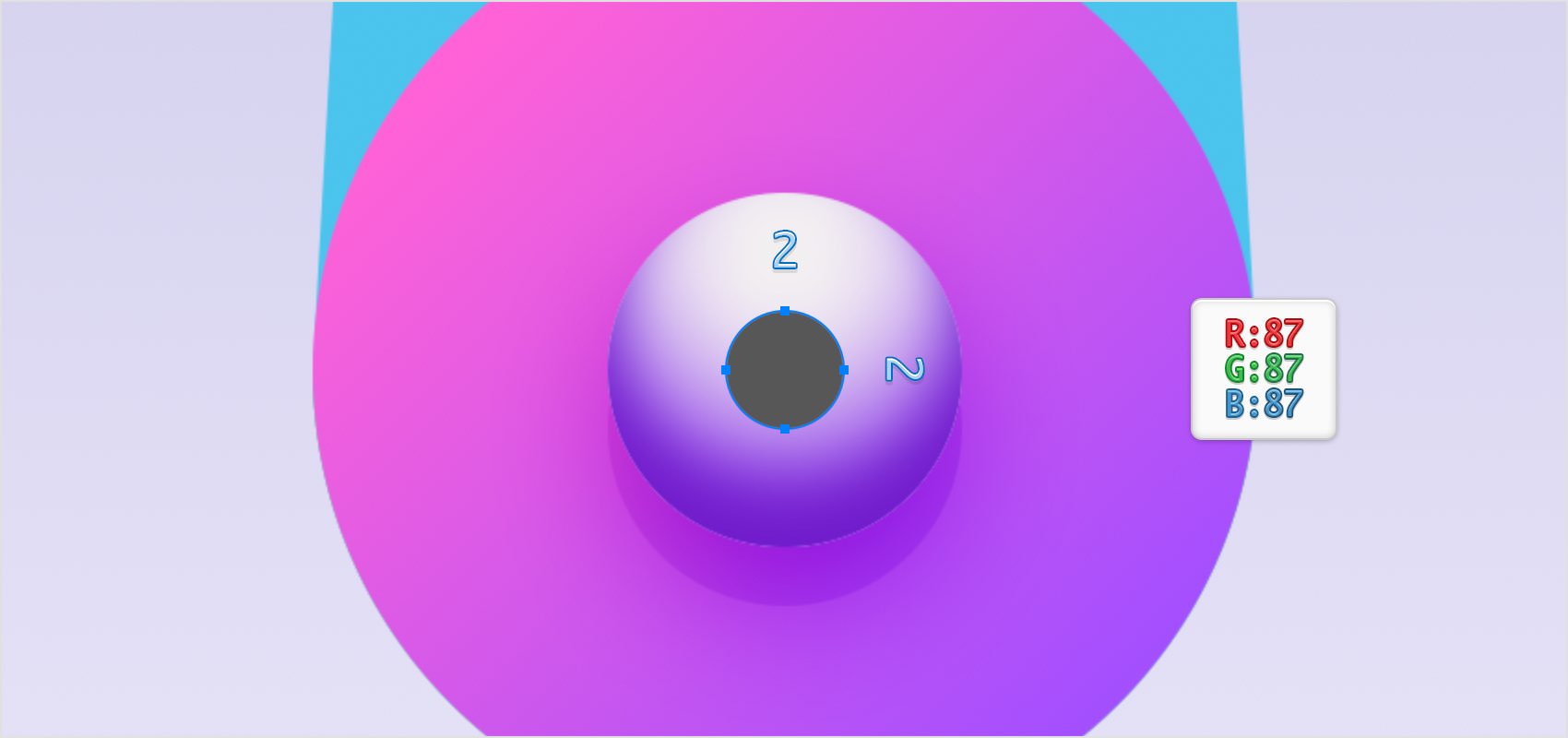
Step 39
Select your red shape and pick the Rotate Tool (R). Using a simple click, move the reference point in the center of your canvas. Once you're done, click and drag to rotate your selection -285 degrees as shown in the second image.
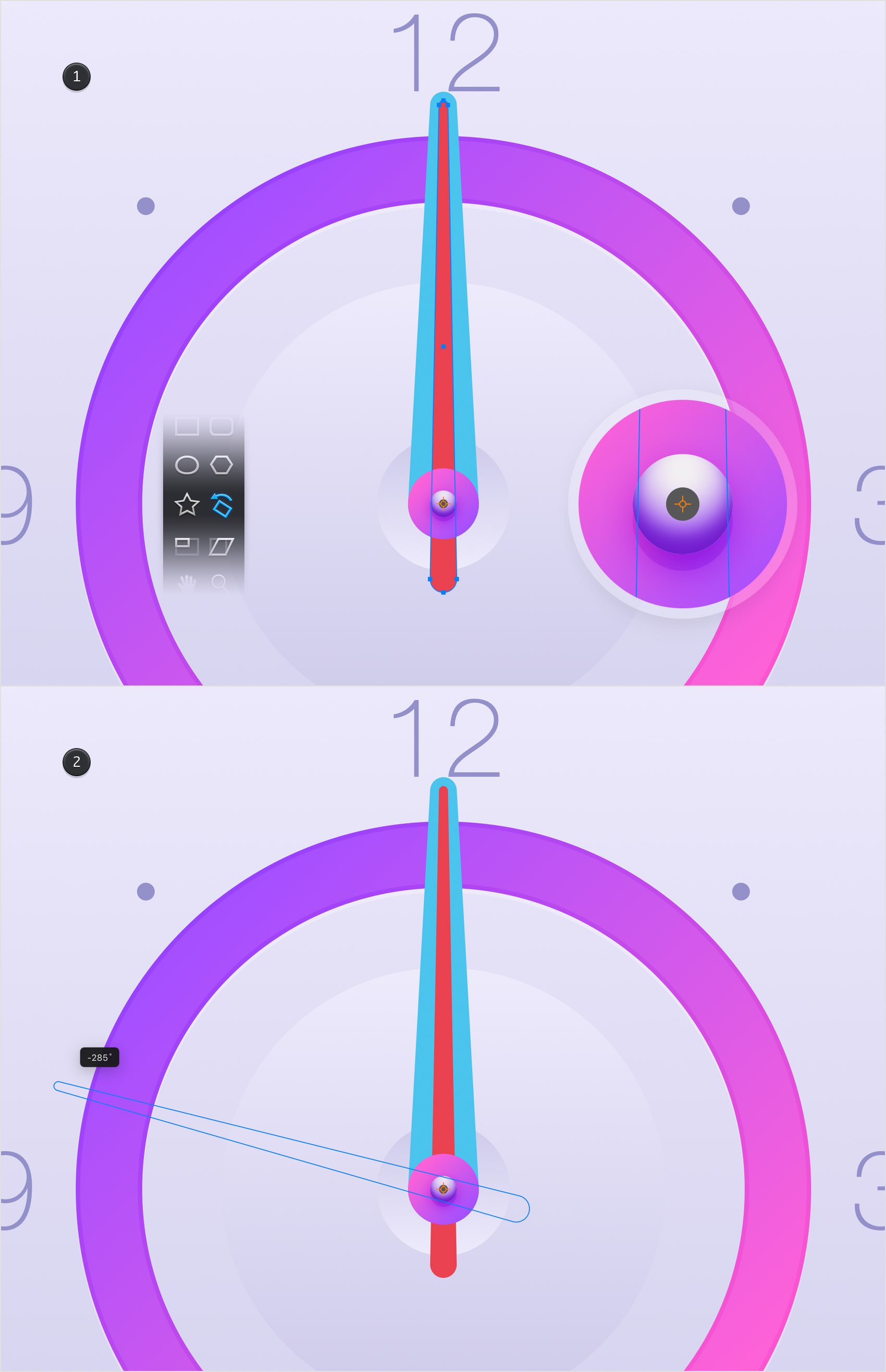
Step 40
Make sure that your red shape is still selected and focus on the Effects pane. First, change the fill color to R=237 G=110 B=97, and then activate the existing Drop Shadow effect and enter the attributes shown below.
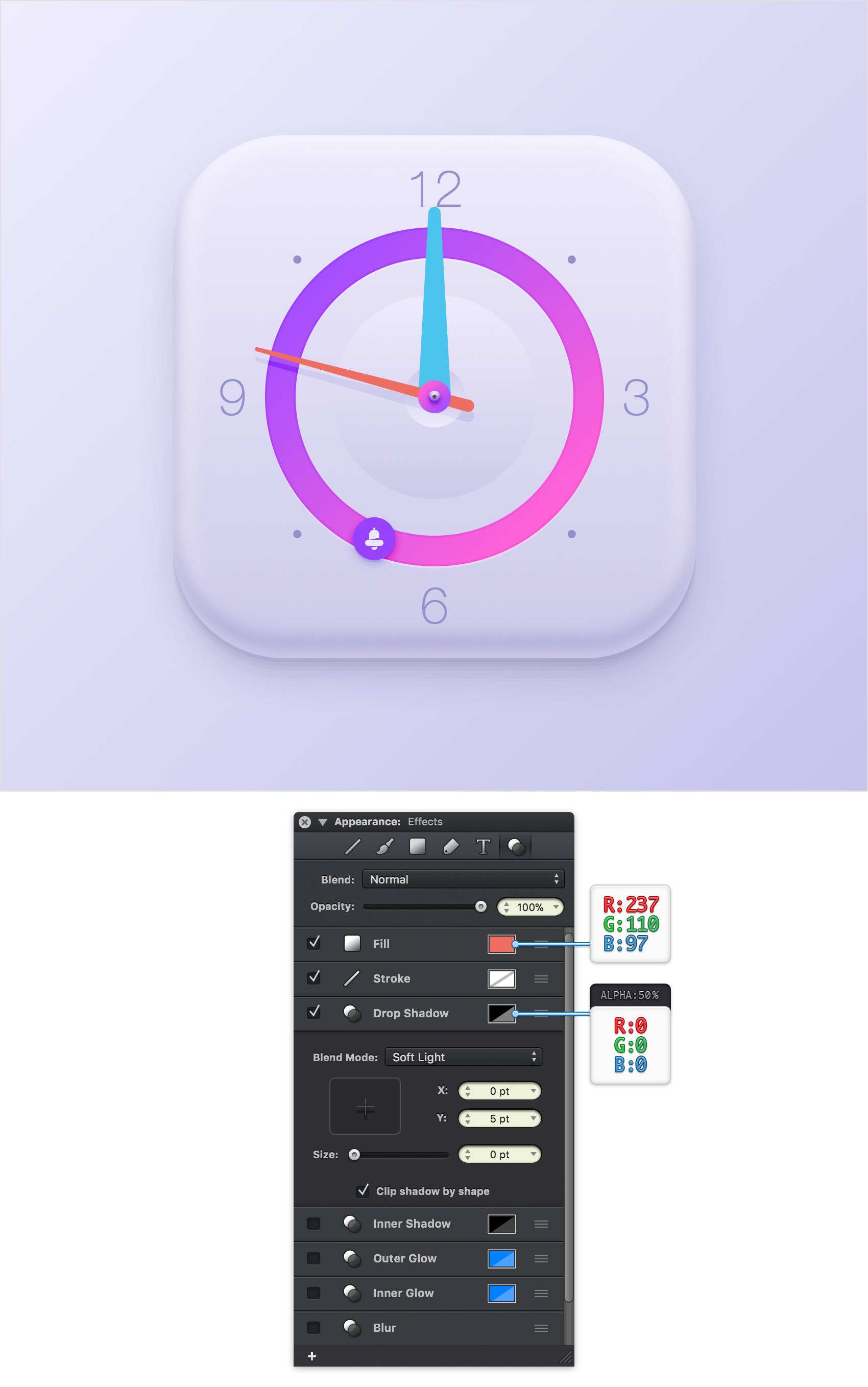
Step 41
Select your blue shape and pick the Rotate Tool (R). Move the reference point in the center of the canvas and then rotate your selection -60 degrees as shown in the first image.
Make sure that your blue shape stays selected and focus on the Effects pane. First, change the fill color to R=105 G=103 B=140, and then activate the existing Drop Shadow effect and enter the attributes shown below.

Step 42
Select your green shape and pick the Rotate Tool (R). Move the reference point in the center of the canvas and then rotate your selection -135 degrees as shown in the first image.
Make sure that your green shape stays and focus on the Effects pane. First, change the fill color to R=105 G=103 B=140 and then activate the existing Drop Shadow effect and enter the attributes shown below.

Step 43
Return to the Layers panel and select your "Bg" layer. Pick the Rounded Rectangle Tool (Shift-M) and set the Corner Radius to 75 pt. Create a 200 x 225 px shape and place it as shown in the following image. Fill this new shape with the linear gradient shown below and lower its Opacity to 80%.
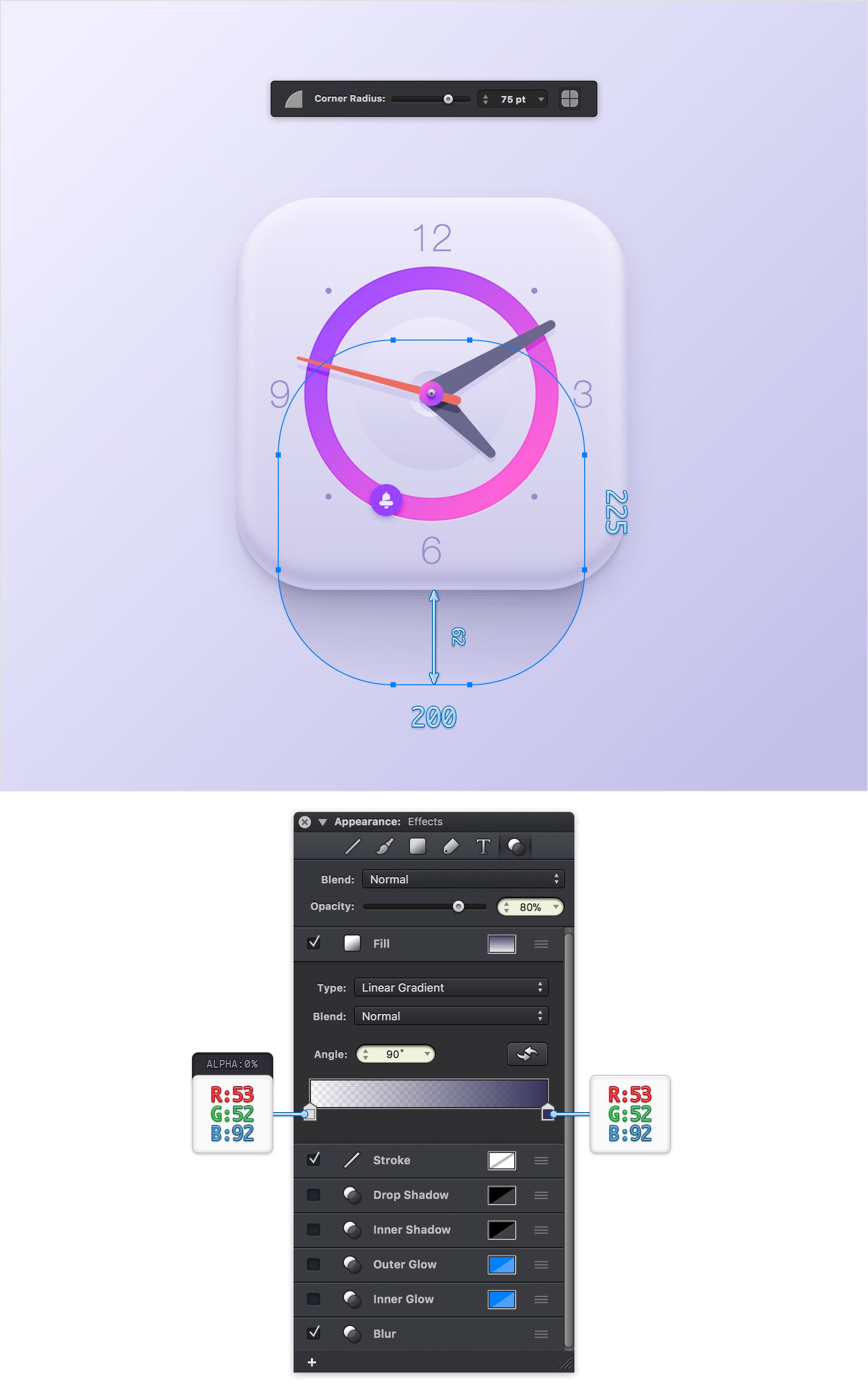
Step 44
Make sure that the shape made in the previous step is still selected and focus on the Effects pane. Activate the Blur effect, drag the Size slider to 25 pt and you're done.

Finished Design
Congratulations, you've finished the tutorial!
Hope you've enjoyed learning some of the techniques and processes presented in these steps. As always, feel free to adjust the final design and make it your own.

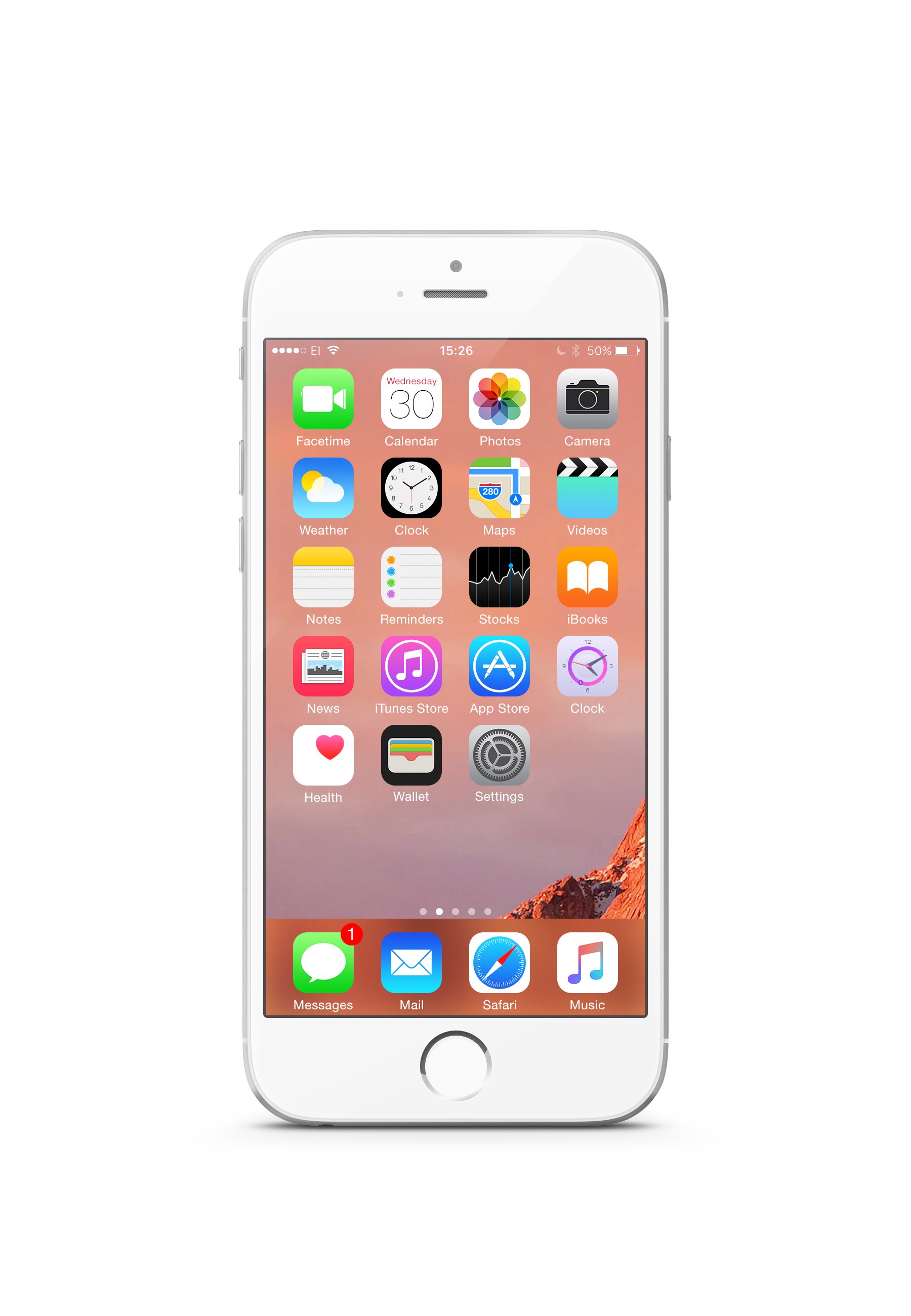
Download Graphic File:
clockappicon.idraw 


